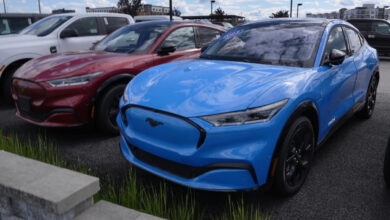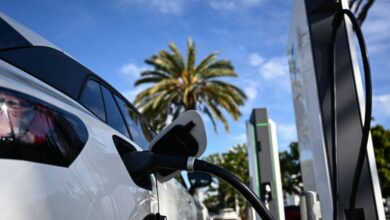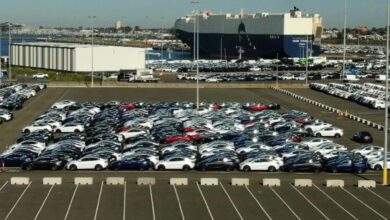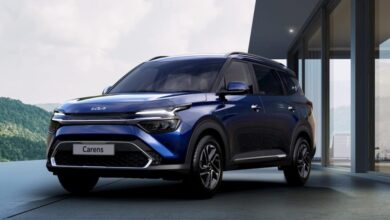I Drove A Bunch Of Chinese Cars And They Are Amazing: How China Learned To Build Better Cars While The West Was Sleeping

Chinese cars have been in the news lately, as they — to many — represent a threat to the American auto industry. At the same time, they represent a potential relief in what many see as an overly expensive EV landscape, and thus a way to potentially get more people to give up gas guzzlers for cleaner cars. Will China come to the U.S. or won’t they? In Western countries that are less protectionist, China is already there, competing hard via genuinely compelling and outside-the-box EVs. While in Germany last summer, I had a chance to drive some of those Chinese EVs and…well, they are good. Very good.
How did we get here? How is it that China is building world-beating electric cars? It wasn’t long ago that China’s automotive industry found itself multiple steps behind that of the West. In fact, many Western automakers considered the Chinese market a veritable gravy train — a place where the local automakers weren’t meeting an astronomically large demand for good cars, leaving a humongous gap for American and European companies.
![]()
And so the West filled the gap, and as a result, its coffers with exorbitant quantities of cash. In fact, ten years ago, the Chinese market was pretty much the only thing any Western automaker wanted to talk about. The sales opportunities seemed endless, and in many ways, it felt like the beginning of a huge opportunity for corporate growth.
The Joint Venture: China’s Brilliant Chess Move
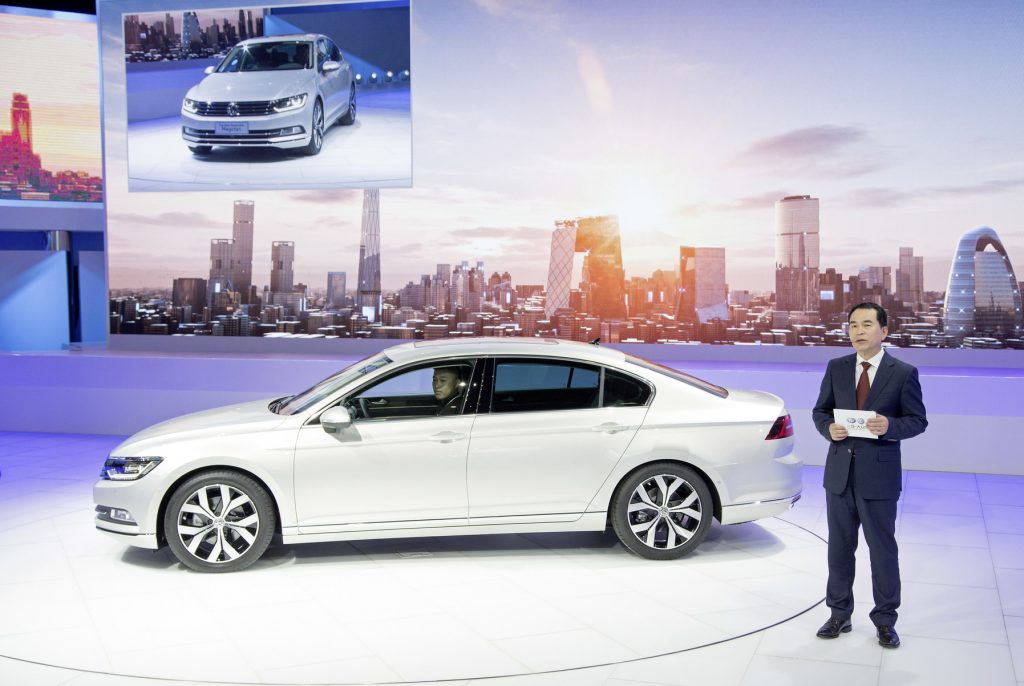
But China isn’t dumb. It was not just going to allow the West to sell cars and export billions of dollars out of China. No, China wanted something in return for access to the biggest car market on earth: It wanted its own competitive auto industry. And to make that happen, it established a Joint-Venture system. Some version of this had been around for a while (since the late 1980s, at least), but, especially in the last decade, the system’s value has become undeniable as China finally — for the first time ever — becomes a dominant player in the auto world.
To describe how this all went down, I’ll quote my colleague Tycho, who is a world-class expert in the Chinese auto market, having lived in China and covered its auto industry for over a decade. I asked him a bit about the origin of the Joint Ventures, to which he replied:
“In the 1980s, the Chinese government realized it was way behind the West in car making. To kick-start the industry, it created the joint venture system. Under this system, foreign car makers could only produce cars in China with a local partner, and they could not have more than 50% of the shares. Deng Xiaoping, the chief architect of China’s reform and opening up [to the west], gave a very important instruction to the automobile industry, “Joint ventures are allowed, not only for cars, but also for heavy-duty vehicles.“
Really, they were more than just “allowed,” they were required. And western automakers gladly accepted this knowing full well why China was doing it. “The goal of the Chinese government was clear to everyone and not a secret,” Tycho told me. “But with such a large and potentially lucrative market, Western car makers just couldn’t resist the deal.”
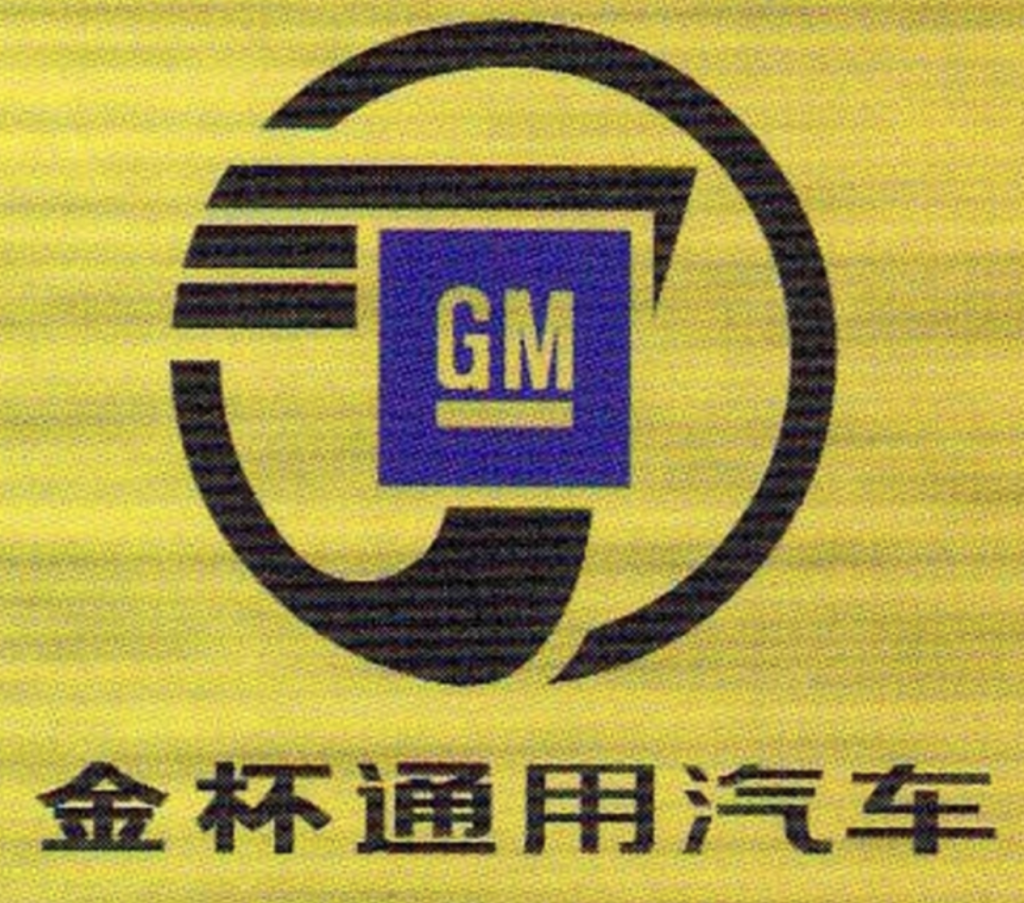
Tycho says that, early on, the system didn’t seem to spur much innovation locally, much to the chagrin of the government. “[Local companies] were happy to let the foreign partners develop the cars and cash the profits,” he said, though this began changing in the 2000s when stronger local carmakers like BYD, Chery, Geely, and Great Wall rose to power. This, along with the financial crisis that led western partners to reduce investment in China, Tycho told me, led the Chinese partners in the joint ventures to focus more on building their brands.
He told me that, prior to the Joint Venture era that began in the 1980s, Chinese car manufacturing “was basic at best,” with little auto development, dated production methods, and certainly no true efficient “mass production” strategy. “It was a notch above handbuilt, but not a big notch,” he said. “The joint ventures certainly taught Chinese car companies how to mass produce cars, everything from production to managing supply chains to distribution.”
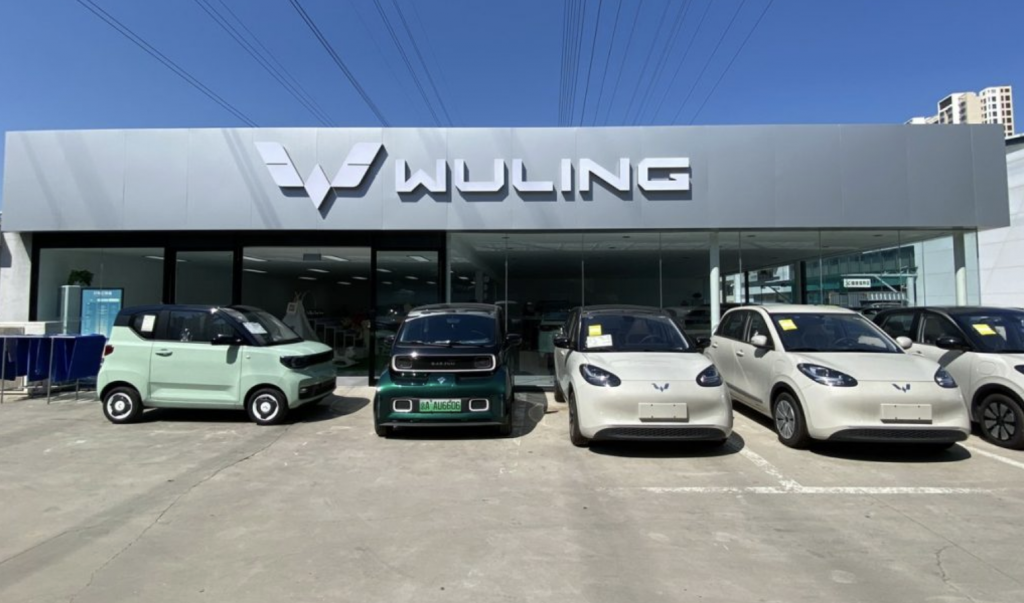
Tycho went on, discussing the state of the Chinese car market even just ten years ago.”In 2014, some 19.7 million passenger cars were sold in China. The local brands accounted for 38%, the rest was for the joint ventures,” Tycho told me. “EV sales were non-existent, there were a few PHEVs and HEVs that sold in tiny numbers. The SUV segment was booming, followed by MPVs and sedans. There was some EV development, but at the time, nobody took it seriously.” Tycho says foreign partners were loving all the cash flowing in.
When I asked how China became so dominant in the auto world recently, Tycho broke it down for me. “China could become dominant because the country was at the right place at the right time, with the right policies and the right companies,” he said. “In 2009, during the financial crisis, China became the largest auto market in the world. It was expected that China would become the largest one day, but not that soon. This led to more investments in the automotive sector, with many new suppliers and new car makers.”
Beyond the Joint Venture system, there were other key policies related to a Chinese government category called “NEVs,” or New Energy Vehicles, which include BEVs, PHEVs, and hydrogen fuel cell vehicles. This category was subject to absolutely enormous subsidies from both the central and state governments, which played huge roles in accelerating this class of vehicle development.
“With a booming local market, the government saw an opportunity to get ahead of the rest of the world in EVs, and set up policies to support electric vehicles,” Tycho told me, with subsidies — which essentially reduced the price of an EV by 20 to 30 percent — acting as the primary support. “Other perks included easier access to license plates, a roll-out of charging stations by state-owned energy companies, and local perks like free parking spaces for NEVs.”
Building infrastructure was critical, too, with Tycho discussing the supply chain needed to build NEVs at scale:
At the same time, Chinese companies began with creating a fully Chinese supply chain for EVs. It was not a state-only operation, more like a mix of state-owned and private companies.”
“Chinese businesses already owned large mining concessions in countries like the DRC [Democratic Republic of the Congo], and these were now extended to cobalt. There was no large-scale refinery for cobalt, or for lithium, anywhere in the world, so China expanded its existing facilities. That, in turn, made it possible for other Chinese companies to setup battery-part and battery production. It is also important to mention the Chinese consumer, which is quite a different kind than the average American/European/Japanese consumer. Chinese consumers are not vested in the ICE age, they are less traditional, and not loyal to any brand or technology. They are willing to try and buy new brands, with new tech and with new design.”

NEVs were crucial in the Chinese automotive revolution, as Wired writes in its story “How China’s EV Boom Caught Western Car Companies Asleep at the Wheel.” That piece quotes Andy Palmer, who was COO of Nissan for a while, CEO of Aston Martin, and subsequently in the EV bus and charger space:
“China has a vast market, it has economies of scale, it has subsidies and encouragement from central government, and it has an international strategy that seeks dominance in overseas markets with a product—affordable electric vehicles—that Western manufacturers aren’t able to make,” says Palmer. He saw China’s long-term game plan firsthand when, in 2005, he was a board member of a 50-50 joint venture between Nissan and China’s Dongfeng Motor Corporation.
“I was a rare foreigner in the middle of that environment,” says Palmer, “and I saw how China carried out its series of five-year plans. Even back then, it was apparent that China had concluded that they couldn’t compete with the West with internal combustion engines. Their risky but innovative solution was that the way to leapfrog the West was through what they called ‘new energy vehicles.’”
Today it’s local brands leading the EV revolution in China. But what about all the joint-ventures that dominated that market and helped bring auto engineering know-how to China? How did they get overtaken? Tycho says these companies find themselves behind, having not taken the EV boom seriously.
“In the 2010s, some joint ventures paid lip-service to the policies of the Chinese government by setting up half-baked electric sub-brands,” he told me. “The government was not amused. For a long time, joint ventures thought that EV development would lead to nothing. The Chinese partners were split. Some expected more and pushed for it, others agreed and didn’t do anything.”
He gives the example of SAIC, which developed EVs for its own brands rather than relying on its Joint Ventures with General Motors and Volkswagen. He also mentions Dongfeng. “It has joint ventures with Honda, Nissan, and Peugeot-Citroen,” he wrote. “All of these are in big trouble because they missed out on EVs. Dongfeng itself is in trouble too, it was too late for the early boom, and is now trying to catch up.”
It’s been a wild ride for the Chinese auto industry, from building fairly crude automobiles up until the 1980s to building expertise through joint ventures to finally becoming a worldwide powerhouse in EV design thanks to heavy government investment, battery mineral mining advantages, consumers who were willing to buy from new brands, a history in excellence when it comes to electronics design, and a slew of other factors that all converged to bring China to the cutting edge. Finally.
I had a chance to drive a few Chinese cars, and I observed another important factor in China’s rise to the top of the EV world: Speed.
I Drove A Bunch Of Chinese EVS. They Are Amazing
At the annual German Car of the Year event, I had the chance to get behind the wheel of a number of Chinese cars for sale in Germany — yes, competing against manufacturers who had, in order to make fat short-term profits, in some ways taught these Chinese automakers how to build cars via Joint Ventures. China’s strategy worked. These vehicles are now strong contenders in Europe, offering truly unique driving experiences at highly competitive pricepoints. They’re not perfect, but they are on the same playing field as western EVs, and that’s impressive given where the Chinese auto industry was just a few years ago.
Take the Aiways U5, a sub-$40,000 car that focused on value above all else. Here on Reddit is you can read an apparent Aiways U5-purchaser describing their rationale for purchasing the Chinese vehicle:
Before buying the U5, I also drove in the VW ID4, the Hyundai Ioniq 5 and the KIA EV6. It is easily the best car for the money. The ID4 is actually smaller, has the same range and i dont see the advantages above the U5.
The Ioniq 5 does look quite quirky and I do love the design. The UI is more refined and seems more finished that the U5. But the price difference is too big to justify the difference.
The EV6 is also a great contender, but it is simply a lot more expensive than the U5. Especially if you want to have the same amount extras as the U5 has standard the price difference is way too big.
Let me know what you think. Happy to answer any questions you might have.
It’s this sort of logic that drives folks to buy cars from these Chinese brands — value for money. Though increasingly, in certain markets Chinese EVs are becoming so compelling, they’re also commanding high prices not dissimilar from their western counterparts.
Aiways U5 and U6: Learning From A Strong First Effort
Before I get to the Aiways U6, I should mention that I drove its predecessor, the Aiways U5, the year prior. Here’s a literal steaming pile of crap, and also the Aiways:

The video at the top of this section is titled “The Aiways U5 Is Not A Steaming Pile,” because on paper, one might think that it should be. Chinese cars, as mentioned earlier, were historically… not amazing, and Aiways was a brand new company when the U5 came out; this is the brand’s first offering. And, in that context, it’s surprisingly decent!
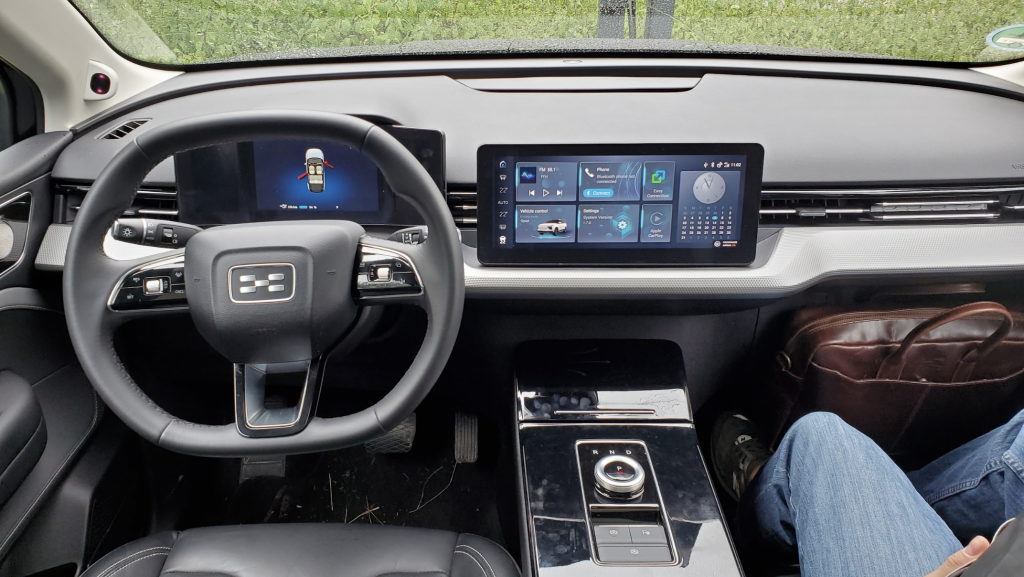
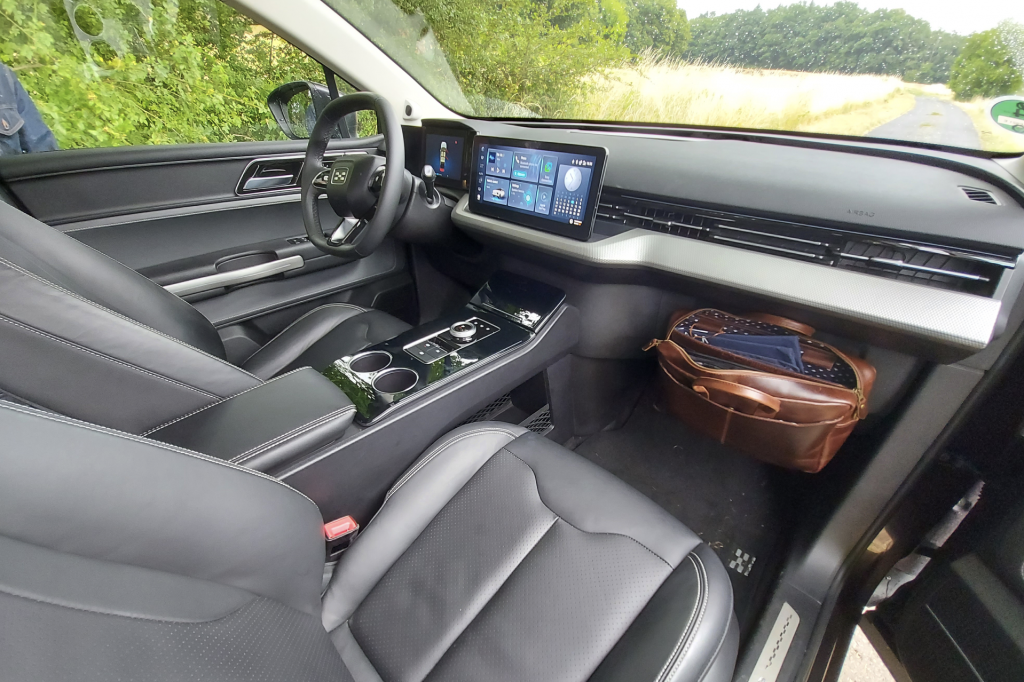
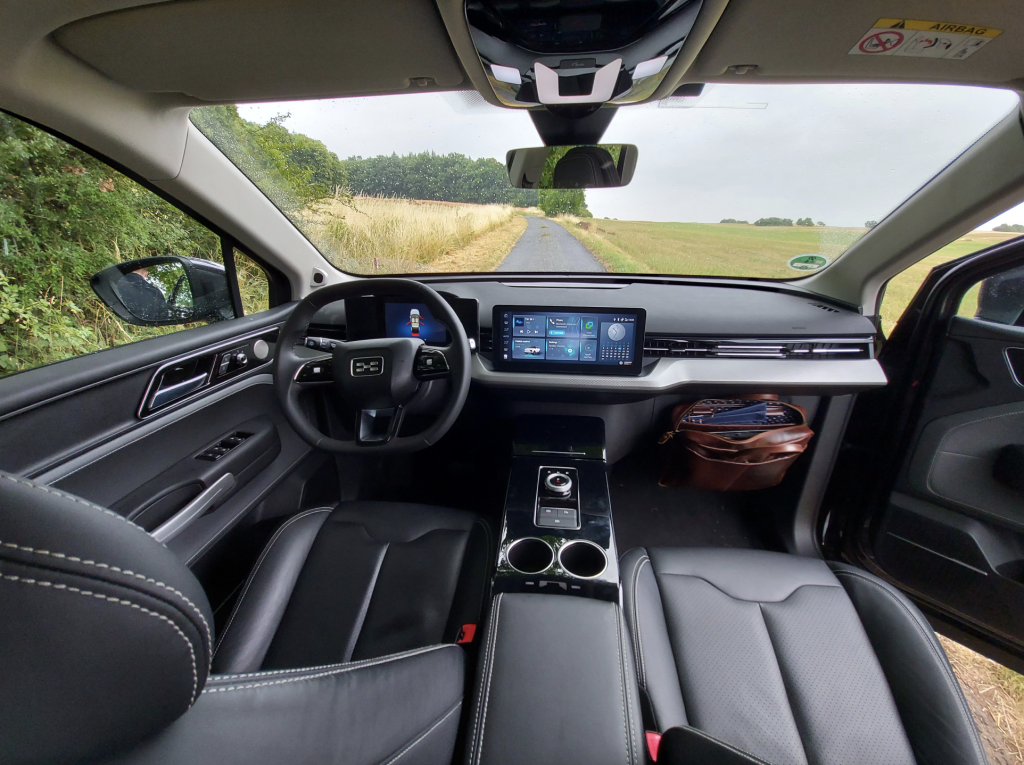
The interior material quality was good, but not great. And the overall design, while perhaps a bit basic, was functional enough and far from hideous. I appreciate that Aiways inserted a bag to act as a glovebox, since it knew that Germans would want something there; but the truth is, I think the company would have been better to just leave that out. The bag just draws attention to the missing glovebox, which is not that uncommon on modern cars (the Lexus RZ that I just drove also doesn’t have a glovebox, for example).
What the U5 does have that some others (like VW’s ID4) don’t is a frunk:

Also worth noting: The legroom in the rear is absurd, in a good way:
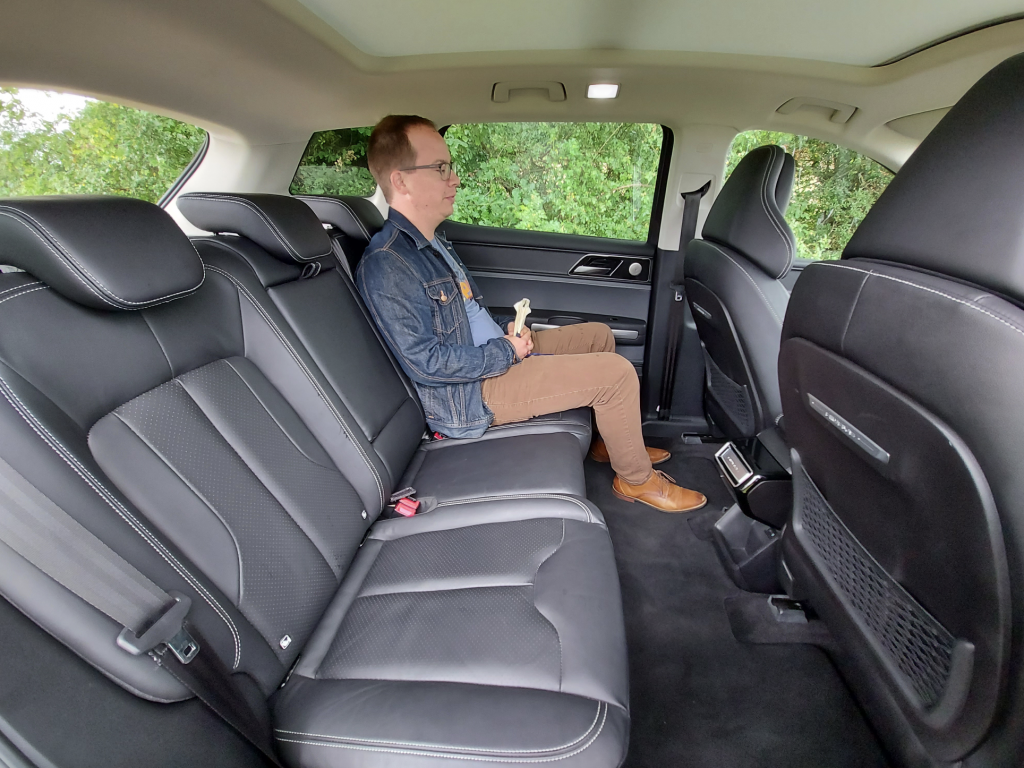
The battery offers 63 kWh of capacity, powering a ~200 horsepower motor driving the front wheels. Range is an estimated 250-ish miles on the European WLTP cycle. Overall, the material quality inside was good, the big screen on the dashboard was nice, and the ride was pleasant.
Really, the biggest downsides of the car was its torque steer (due to it being front-wheel drive); brakes that didn’t feel natural (in an EV, perfectly blending the regenerative braking with friction braking is a tricky thing to do); and its 3-star NCAP safety rating, which would put off some buyers. But overall, it was a great first offering, and one that Aiways clearly learned from.
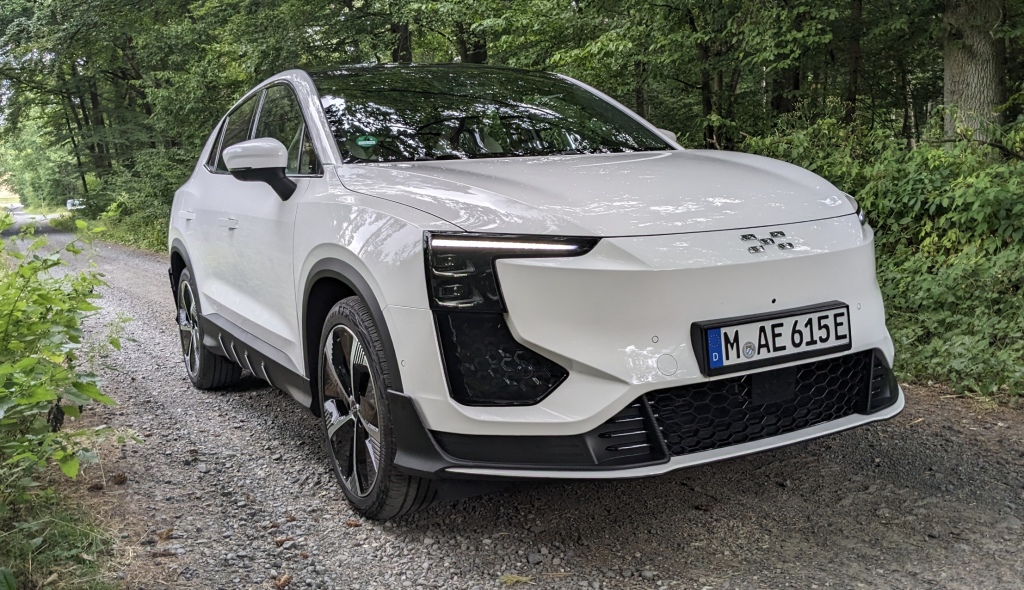
That brings me to the Aiways U6, the successor to the not-steaming-pile U5. It ratchets things up to another level entirely. It is a fantastic machine, in large part because it’s different. And that’s a key point I want to make about modern Chinese EVs; while Chinese automakers certainly learned some manufacturing techniques from their Joint-Venture partners, they are not just copying Western machines: They’re building unique, fun, and creative cars. I know that, with all the Chinese copycat cars that have shown up over the years, there’s a kneejerk thought that anything coming out of the country is going to emulate instead of innovate — that just isn’t the case. China truly is at the cutting edge of EV development, and not just because the country has been building electronics at an elite level for decades. No, it’s not just about the hardware, it’s about design, too.
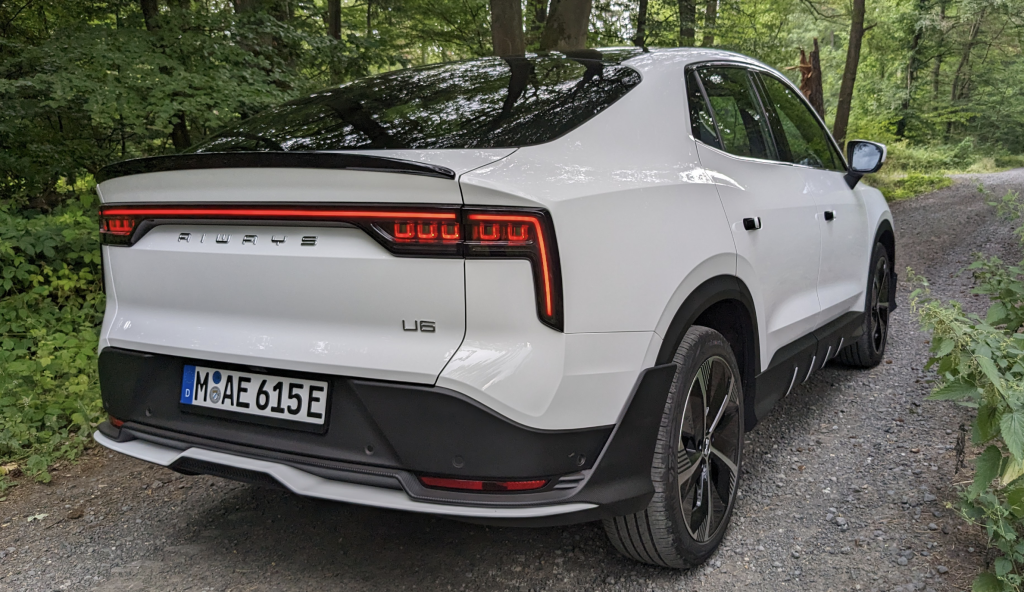
The Aiways U6’s exterior is nice enough, with a slim high-mounted set of DRLs featuring outboard headlights just below. Out back, you can see the SUV-Coupe shape, with a big horizontal Heckblende, and drooping taillights. It’s all quite elegant. But that’s not really what I was talking about when I mentioned innovative design; I was talking about the cabin.
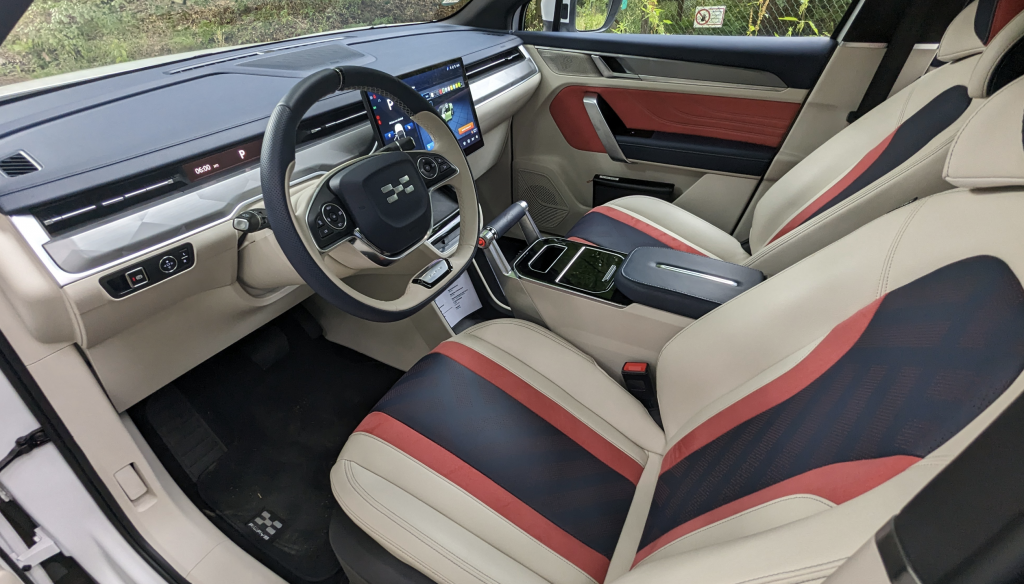
Step into the Aiways U6, and you’re greeted by a not two-tone, not-three tone, but four-tone interior that just works. The blue, red, tan, and black team up to create a light and fun interior that is just a great place to spend time. But it’s not just the way the cabin looks that sets the Aiways U6 apart, it’s how it works. Take the shifter for example. It’s unlike anything I’ve ever used:
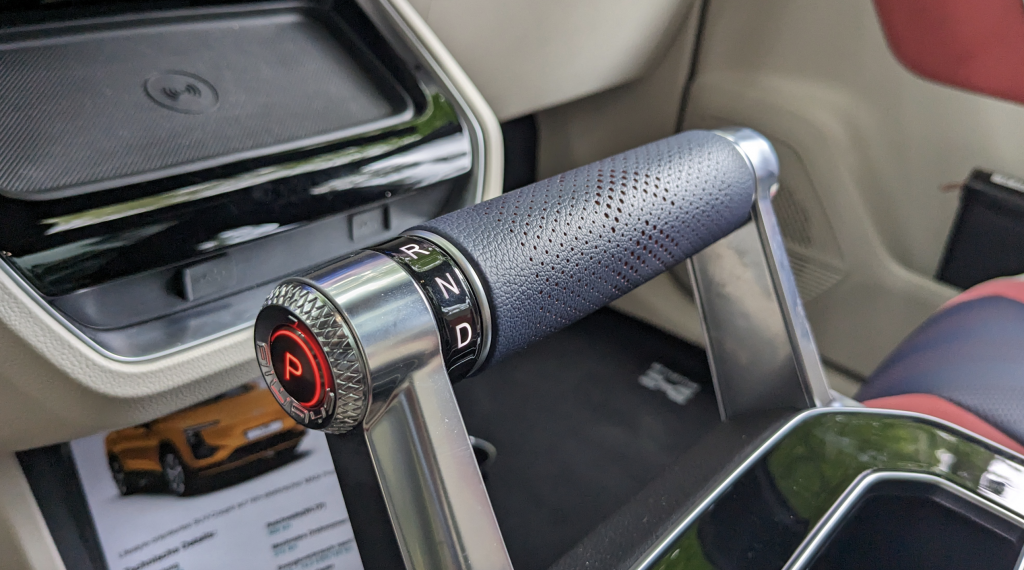
The shifter looks like something out of an airplane, but instead of pushing it down and pulling it back to adjust thrust, it twists. You simply grab the nice blue “tube” and crank it back towards you for drive and towards the front of the car for reverse, with nice detents and a red light indicating which “gear” you’re in. The park button is on the left side, as shown above.
It’s an awesome shifter in an awesome cabin. Just ahead of it in the photo above, you can see the wireless charging pad placed up high, and in a totally practical spot. Up above is a huge, crisp screen, and to the left of that is the “gauge cluster,” which is an elegant, slim design that tells the “gear,” the range, the time, the outside temperature, and the battery state of charge:

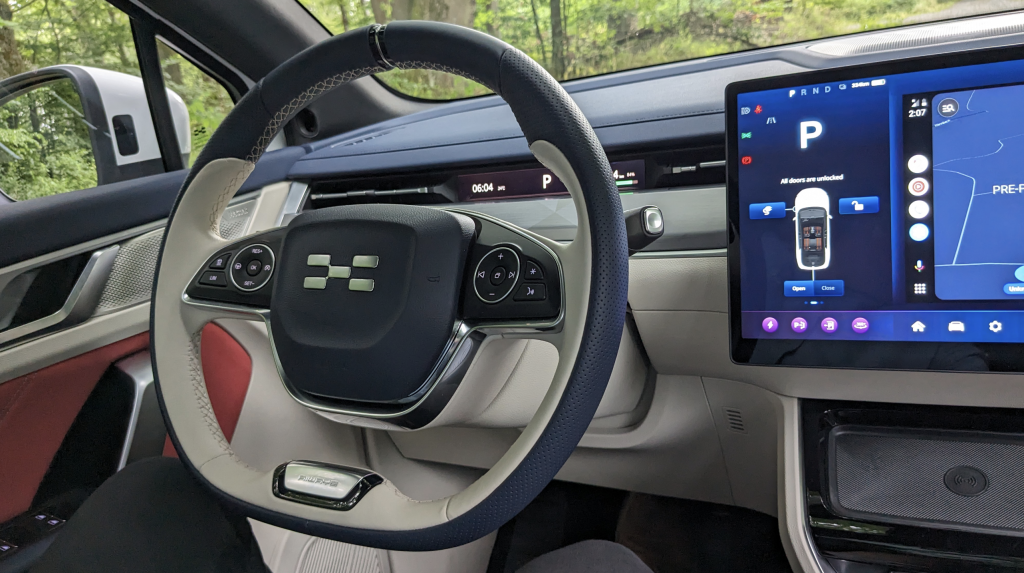
Here’s a closer look at the “gauges”:
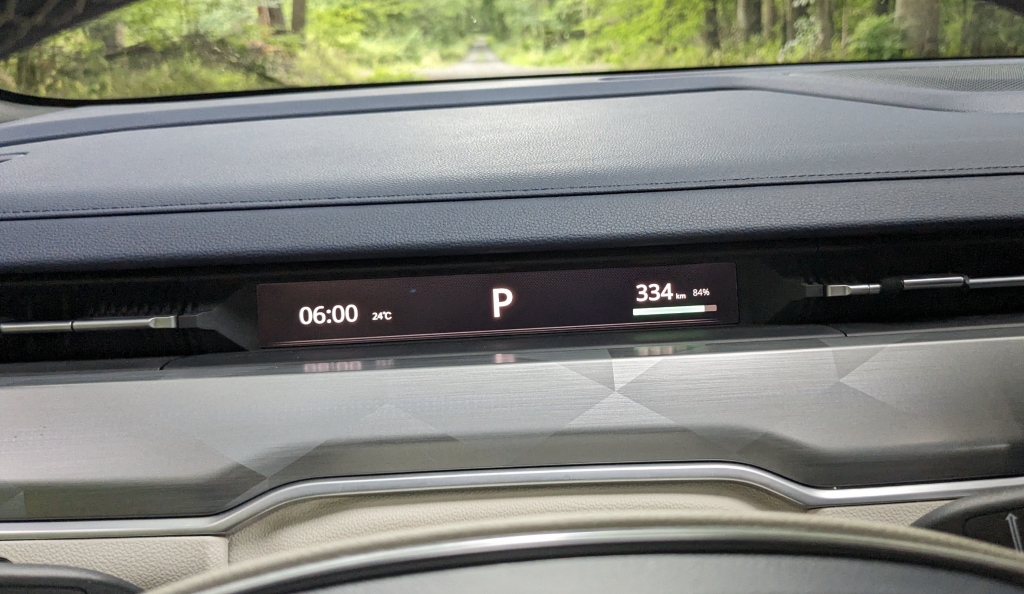
And here’s that screen:
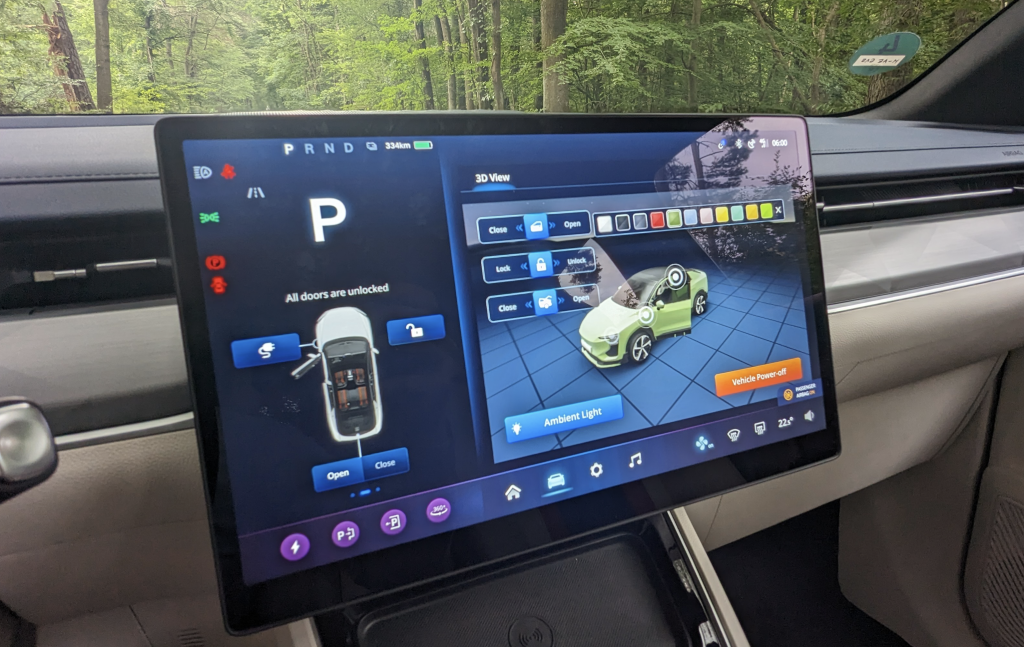
The back seat, like the U5’s, is absolutely humongous:
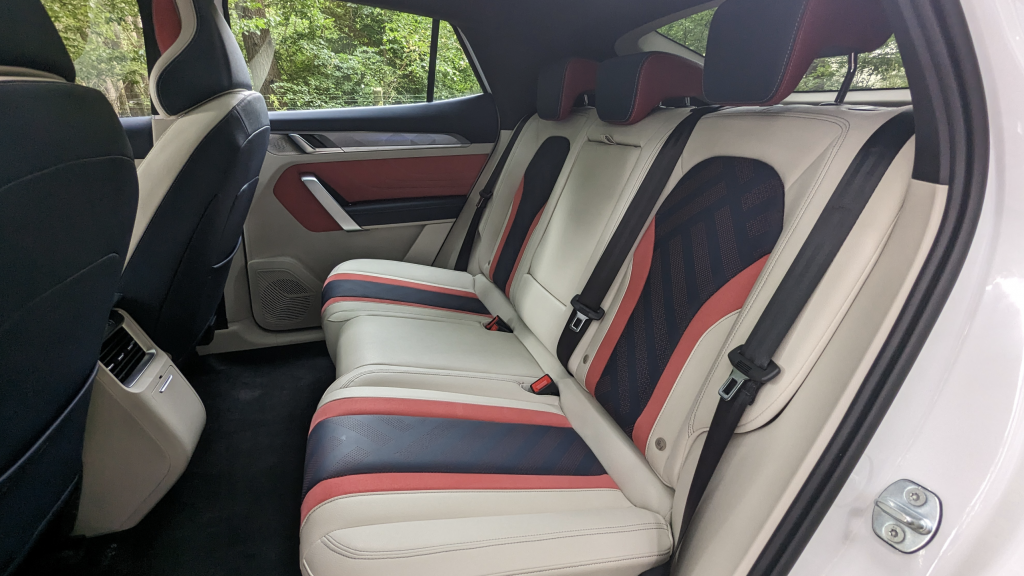
But unlike the U5, the frunk is gone:
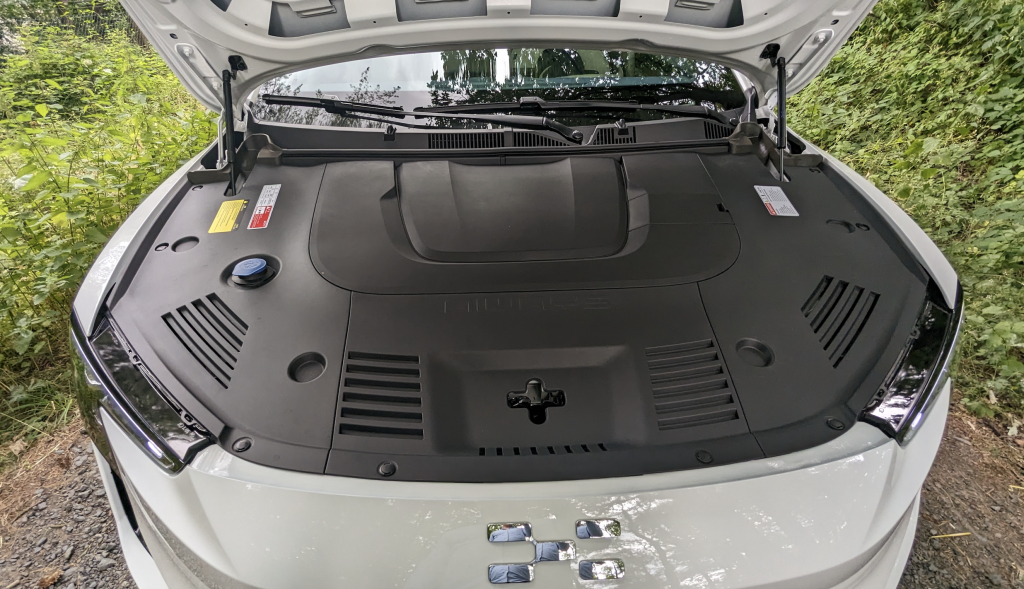
And also unlike the U5: there is a glovebox!:
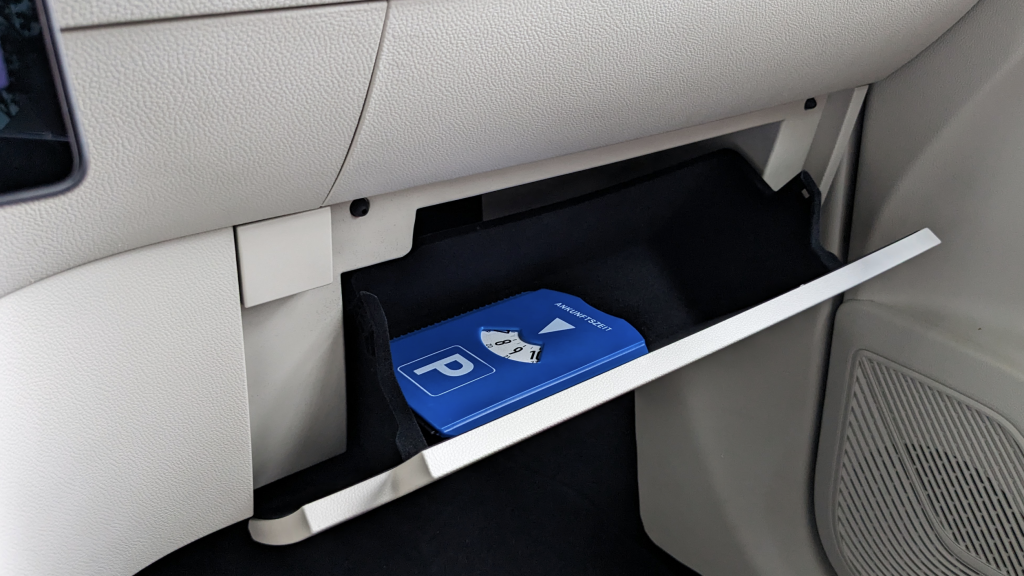
There’s so much more I could say about the Aiways’s cabin, especially its infotainment system and its driver-assist features, but I admittedly spent most of my time focusing on driving, so my main takeaway was just that the design and material quality blew my expectations out of the water:
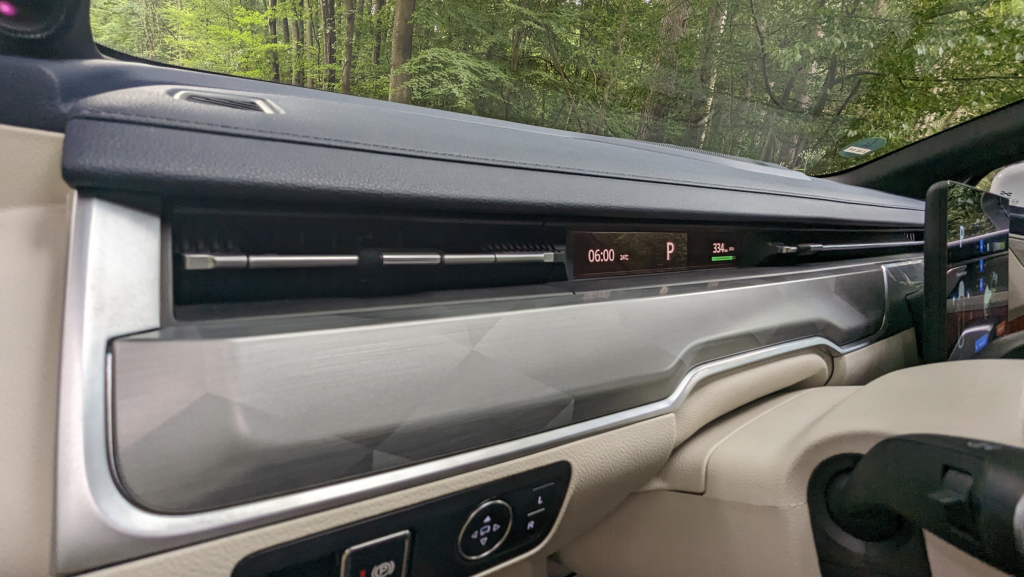
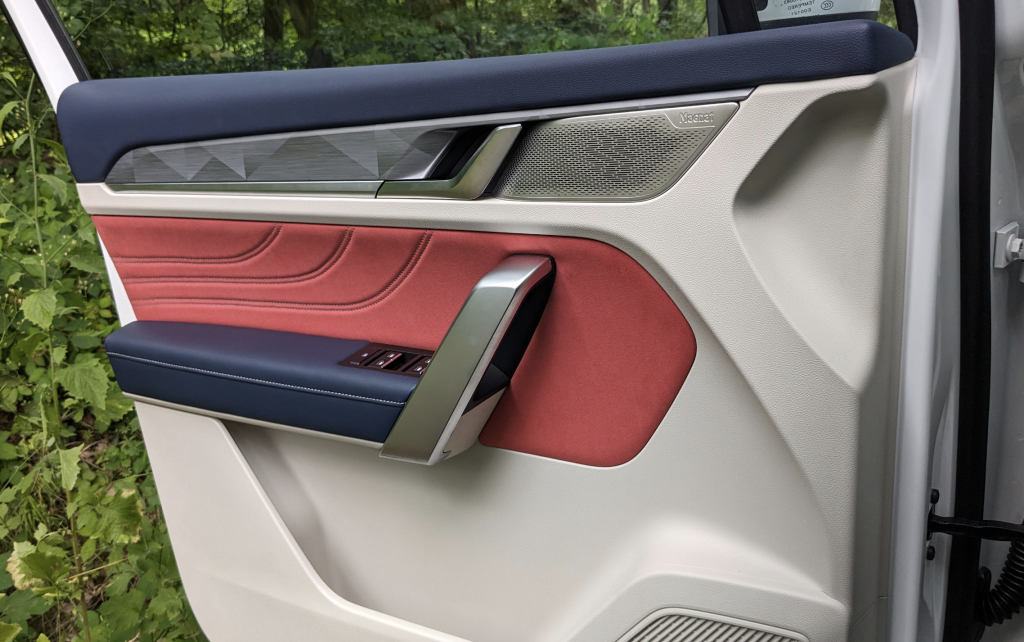

Before I get to the driving dynamics, here’s a bit about the Aiways U6 and the company behind it, per our Chinese Auto Industry-expert, Tycho:
Aiways is a new Chinese EV company, founded in 2017 and based in Shanghai. Founders were Fu Qiang, former China sales director of Volvo Cars (Geely), and Gu Feng, a former executive of SAIC. Their first car was the Aiways U5 SUV, launched in 2018. The Aiways U6 SUV-coupe is their second car, launched in 2021. That’s it, no more cars were ever launched, and Aiways doesn’t sell cars in China anymore. The company suspended production in its main factory in late 2023 and has been in financial trouble ever since. Aiways says it wants to focus on an export-only sales model, the current status of these plans is unclear.
Aiways U6: 189 inches long. Single motor, front-wheel drive. 160 kW and 315 Nm (215 horsepower, 232 lb-ft). Top speed:160 km/h (100 mph), 0-100 in 6.9 seconds.
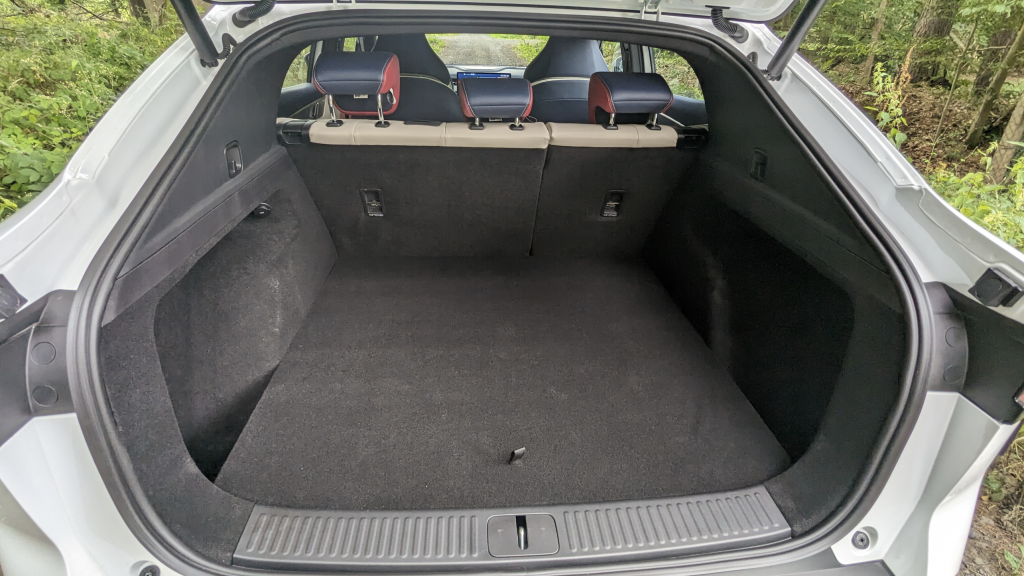
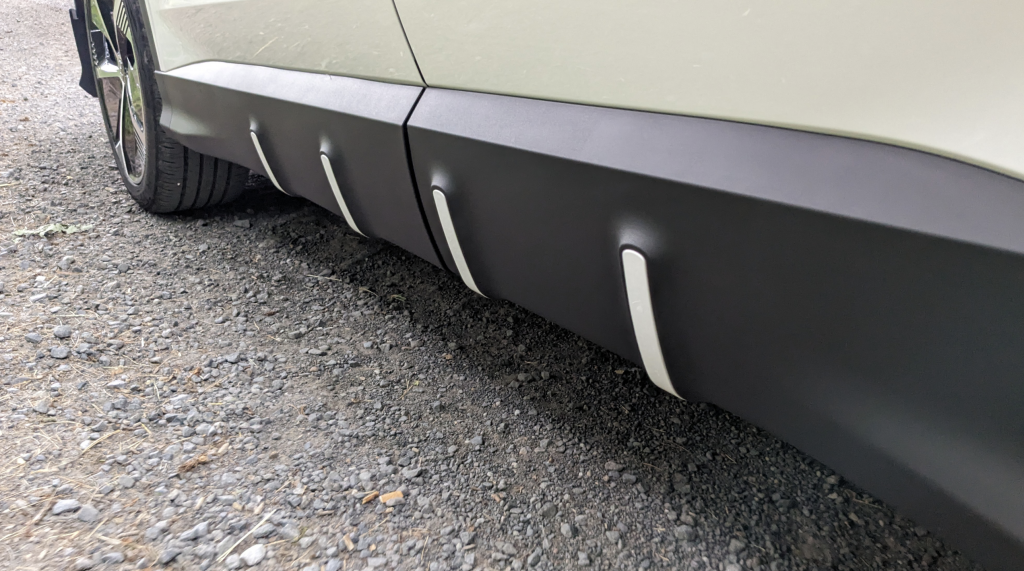
The car I drove was basically mechanically the same as the Aiways U5 not-steaming-pile; it had a 63 kWh battery (offering about 250 miles of range on the European WLTP cycle) feeding the front wheels, and though its output was a little higher than the U5, it certainly wasn’t much quicker. It felt pokey thanks to the inherent response of an electric motor, but 0-60 in 7 seconds ain’t fast anymore, even if it is totally sufficient.
Rear visibility was quite poor, largely due to the coupe-ish shape, and the understeer from the U5 was still very much there. Also still there was a rather unnatural braking feel; the transition between regen and friction brakes was too pronounced. I also found there to be a bit more road/wind noise than would be ideal, I thought the car’s “creep” function at stop signs was a bit too quick, and at over $45 grand, it wasn’t exactly dirt-cheap.
Overall, the car wasn’t a canyon-carver by any stretch, but the ride quality was decent; Android Auto worked great on that crisp, big screen; the huge standard glass roof was nice and airy; and though dynamically it wasn’t anything to write home to the kids about, it was still a lot of fun.
Is it the best for the money? It may not be, and that’s the case with some of the cars here. They aren’t all the best value, but they’re all quite competitive technology-wise. Here’s what Autocar had to say about the Aiways U6 in a review that gives it a 3.5-star rating:
What will be interesting to see when it does go on sale in the UK is how Brits react to a car that offers a good deal of style and substance but without any badge recognition or the reputation of the established Asian and European brands.
With a starting price of €47,588 (£41,700) in Germany, where Aiways has a sales and engineering base, it’s pitched some €8000 (£7000) above the U5. Such pricing invites competition from the likes of the Kia EV6, Skoda Enyaq iV and Tesla Model Y – a fight in which surely only a brave gambler would back it.
ORA Funky Cat: Lots Of Fun In A Small Package
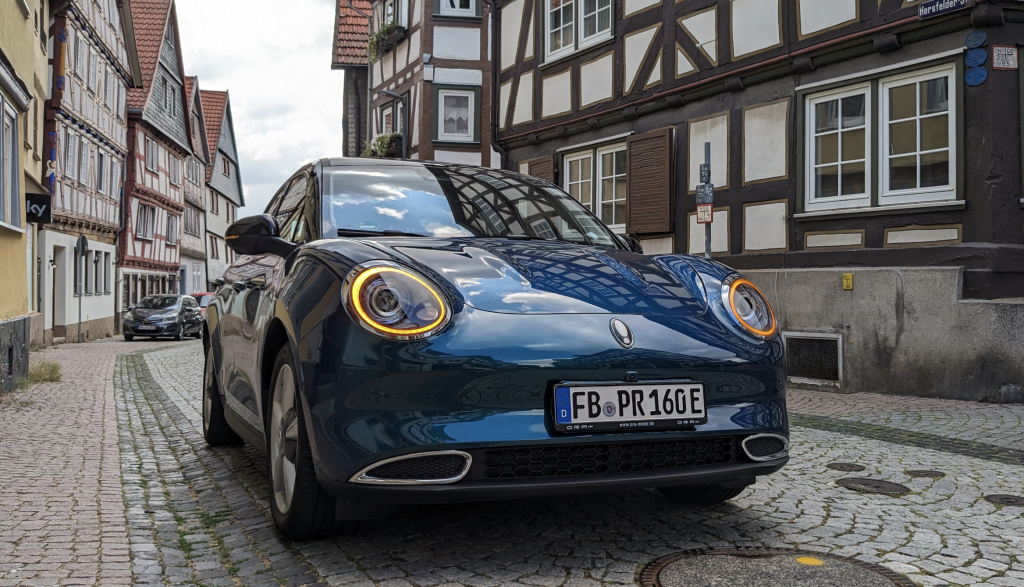
The ORA Funky Cat has changed names since I last drove it; it’s now the ORA O3, which is significantly uninspired. But you can take away the fun name, but you won’t take away the fun character, because that’s built into the design. Check it out:
I mean, check out the exclamation badge right up front!
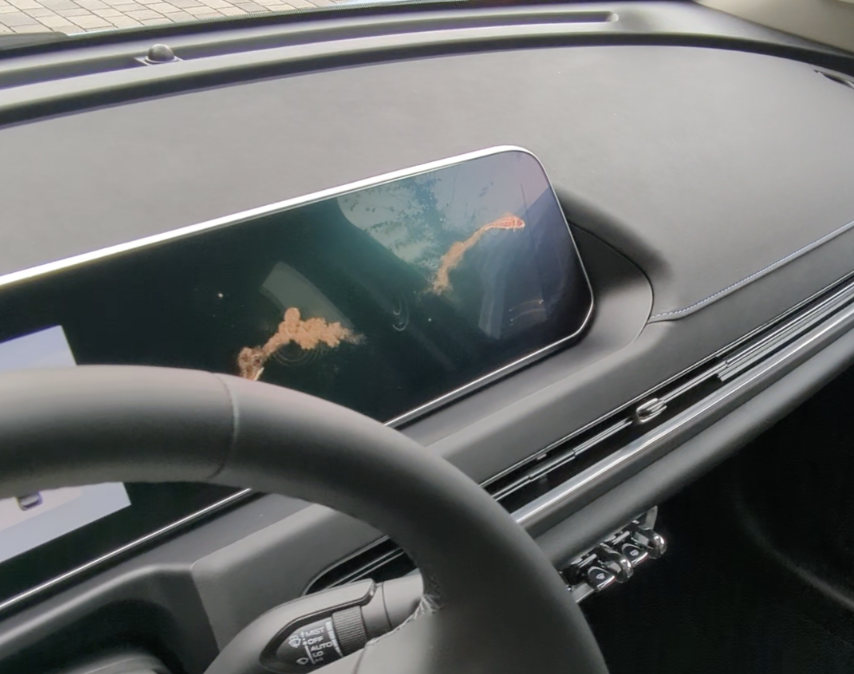
After you unlock the car, the daytime running lights do a fun little dance, then when you open the door you see some fish do a dance on the center screen (see above), and to the left of that screen you see the exclamation again on the steering wheel that acts as the centerpiece of the gorgeous interior:
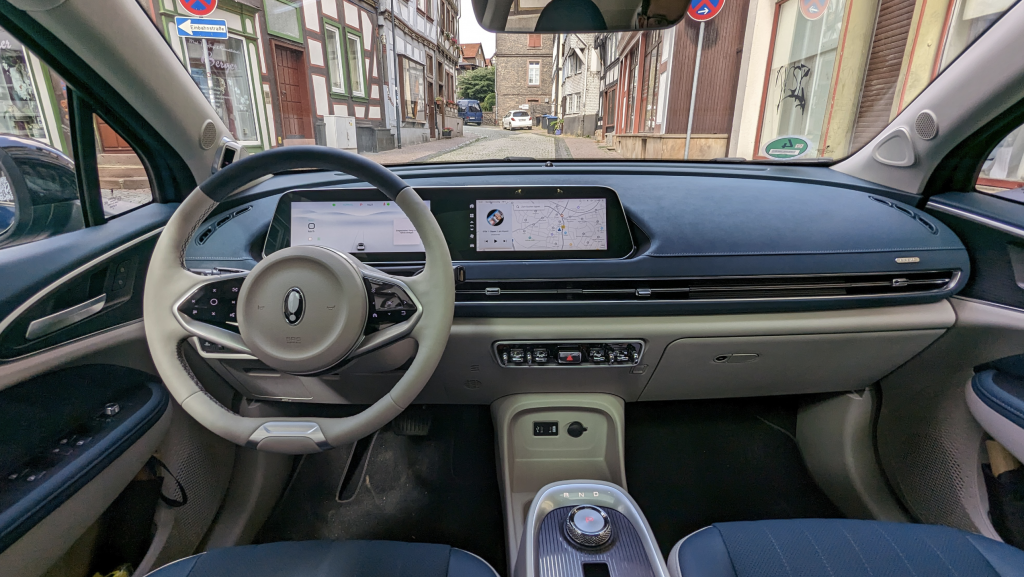
Look at that incredible blue-and-tan two-tone look. Absolutely fantastic! And the quality is good!:
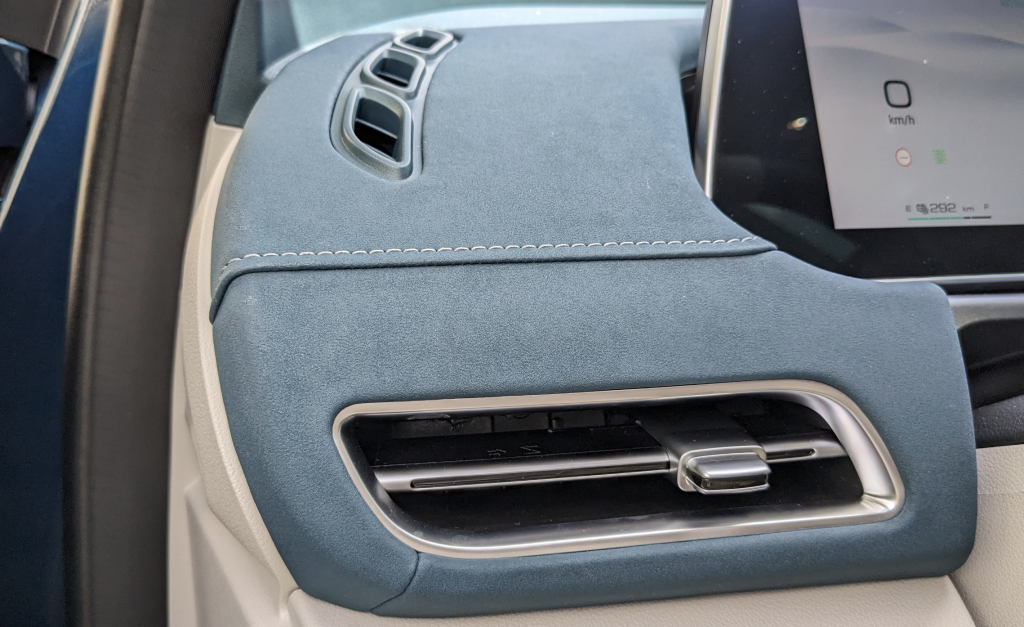
Here’s a look at a black interior I sat in, as well:
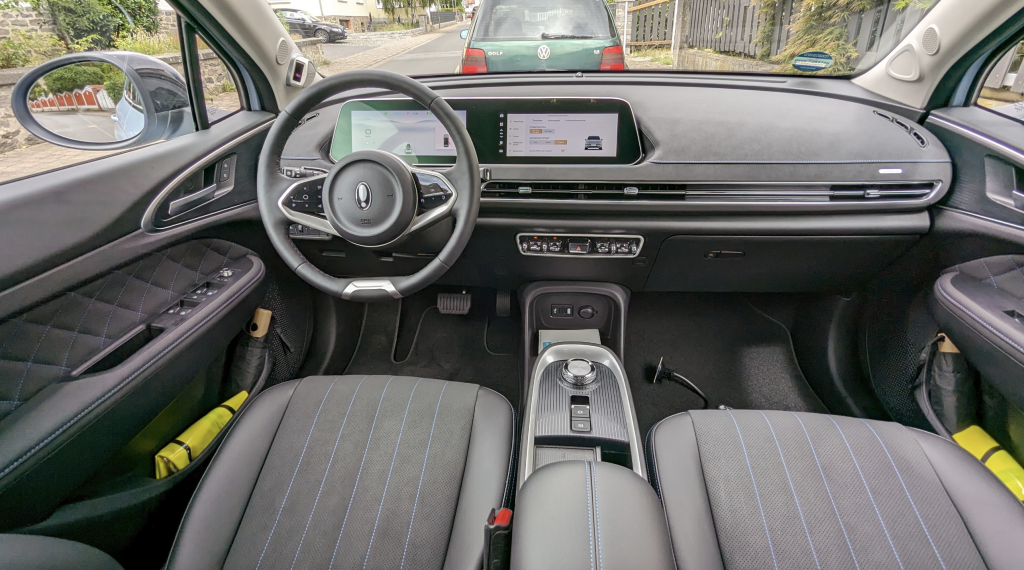
The Funky Cat has dual screens — one ahead of the driver and one at the top of the center stack. There are elegant little toggle switches for the HVAC down below that screen:
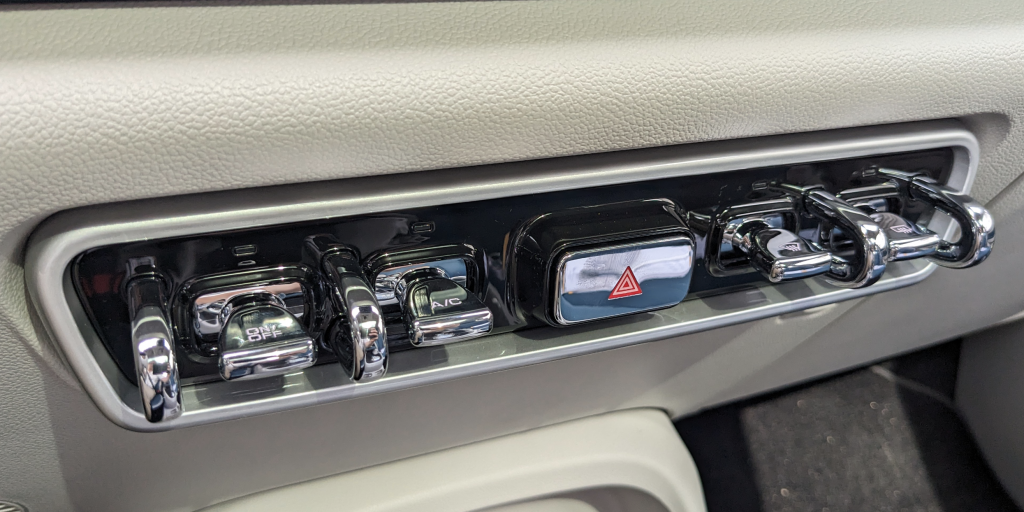
And if you look at the A-pillar, there’s driver-monitoring tech to make sure you don’t fall asleep.
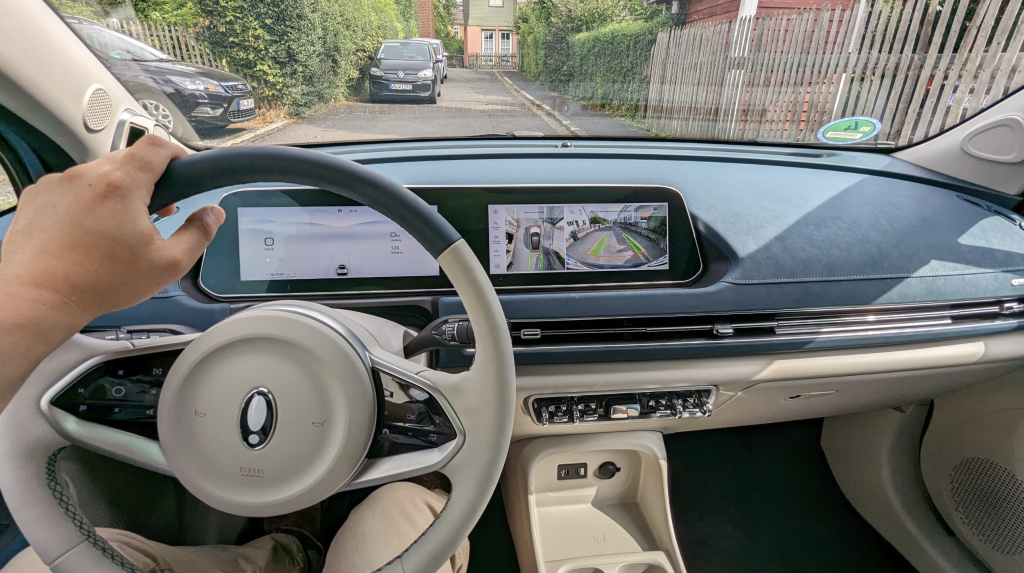
The camera technology on the Funky Cat is second-to-none, especially at the price point. These photos won’t do it justice, but the quality, and the excellent views shown on the screen — awesome:
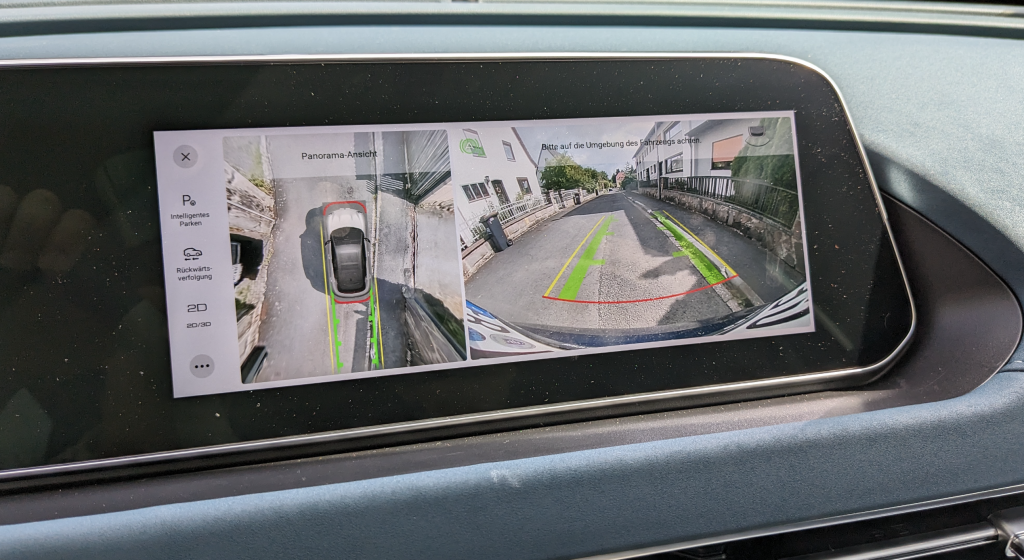
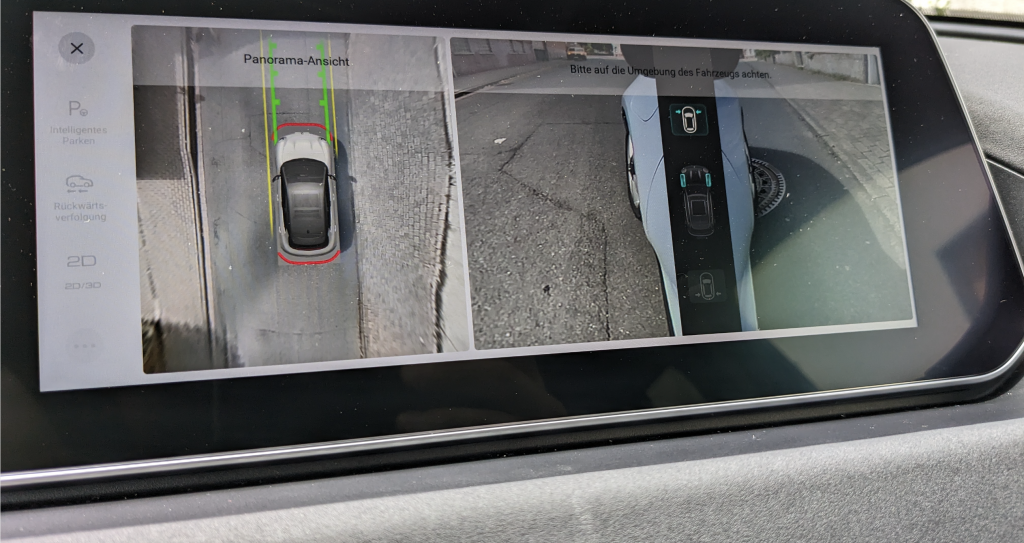
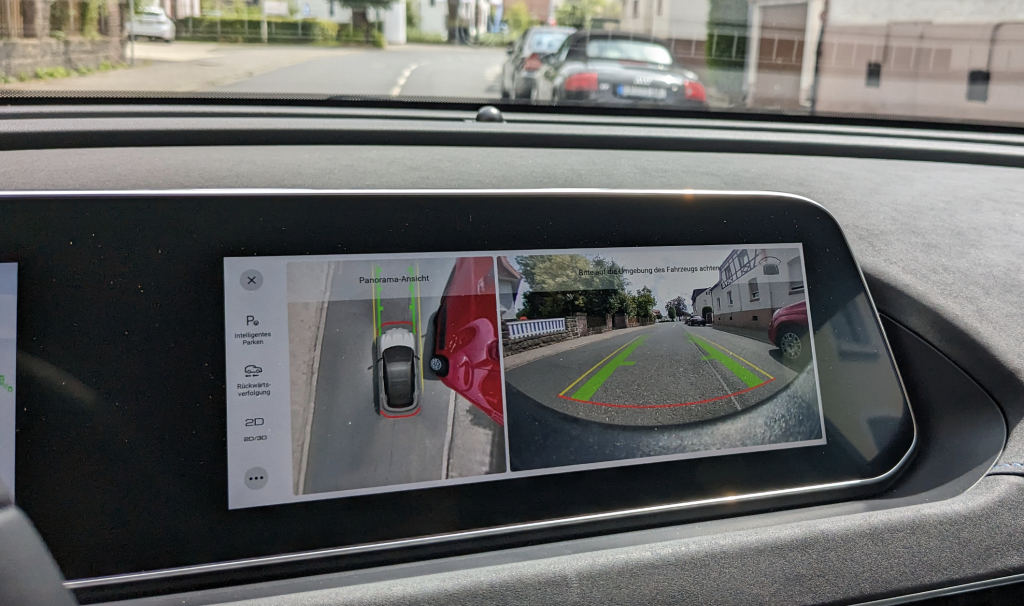
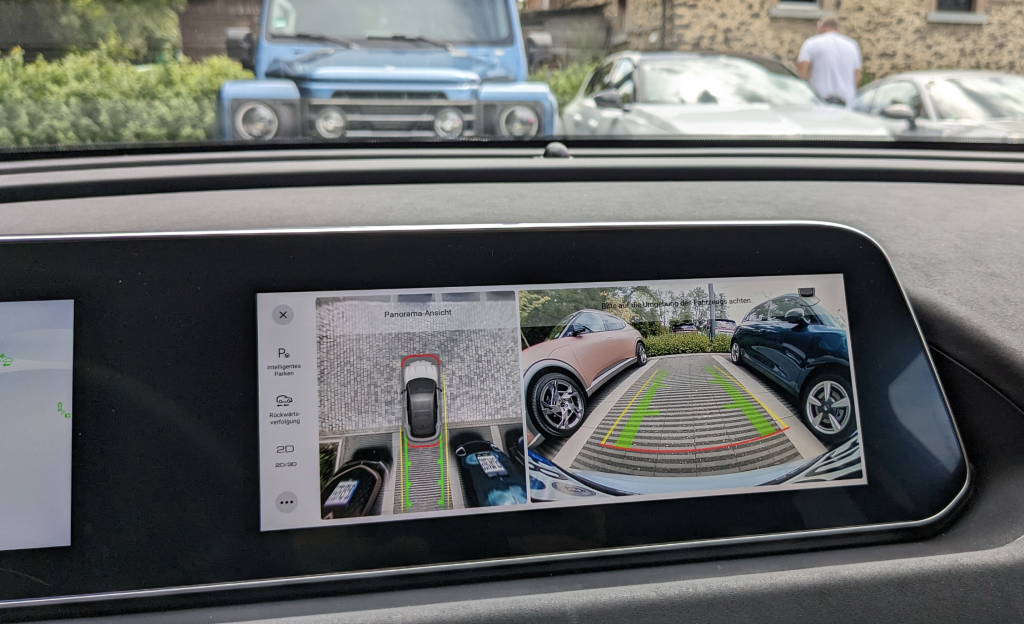
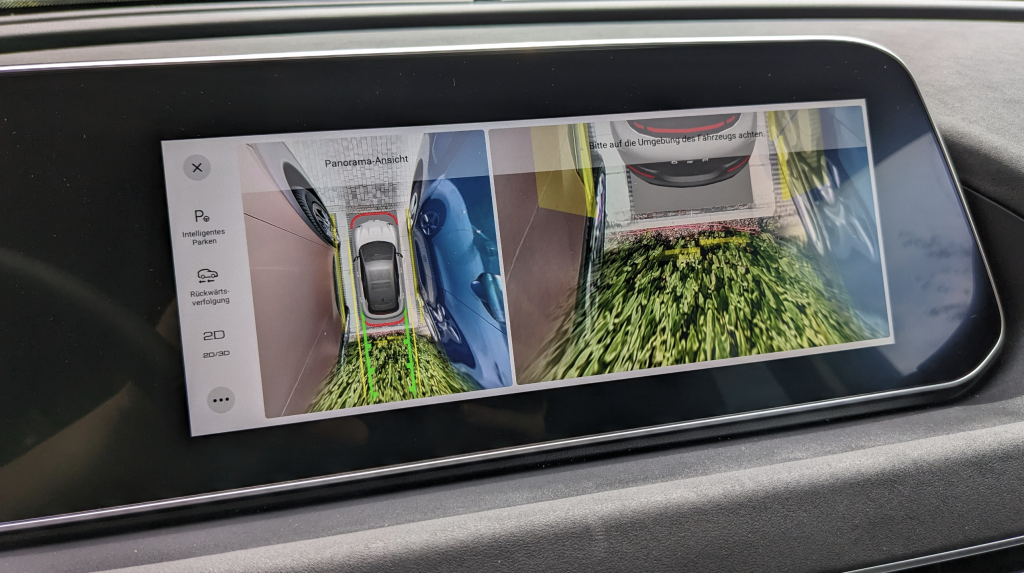
The shifter is a rotary dial on the center console, just ahead of the center arm rest/storage bin. It’s pretty bad, offering no feedback at all other than some lights telling you when you’re in reverse, neutral, or drive. I also think that a shifter like this should be out of the way to free up this space for more storage.
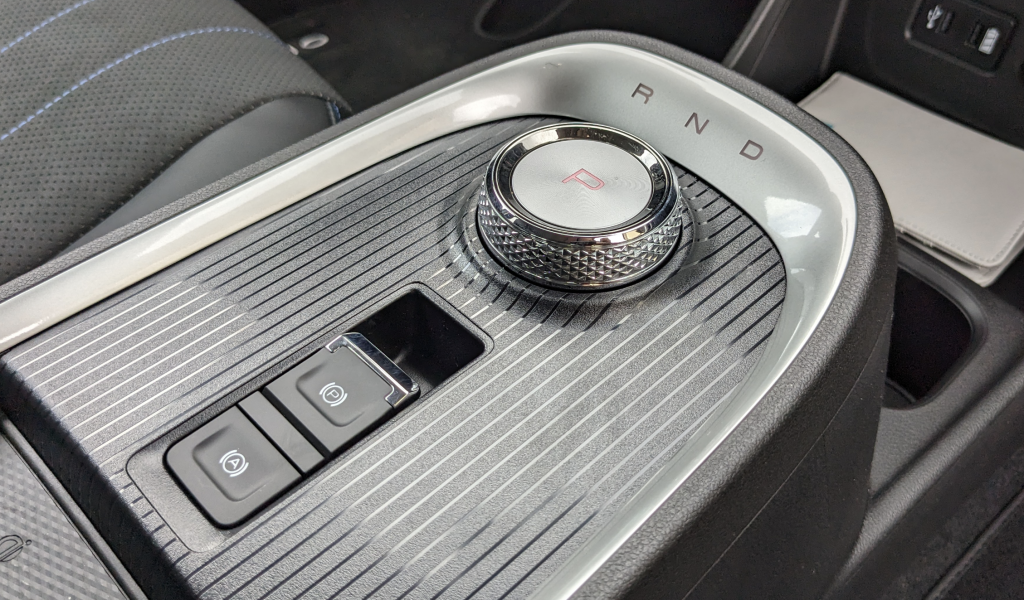
Other issues: Rear visibility is rough:
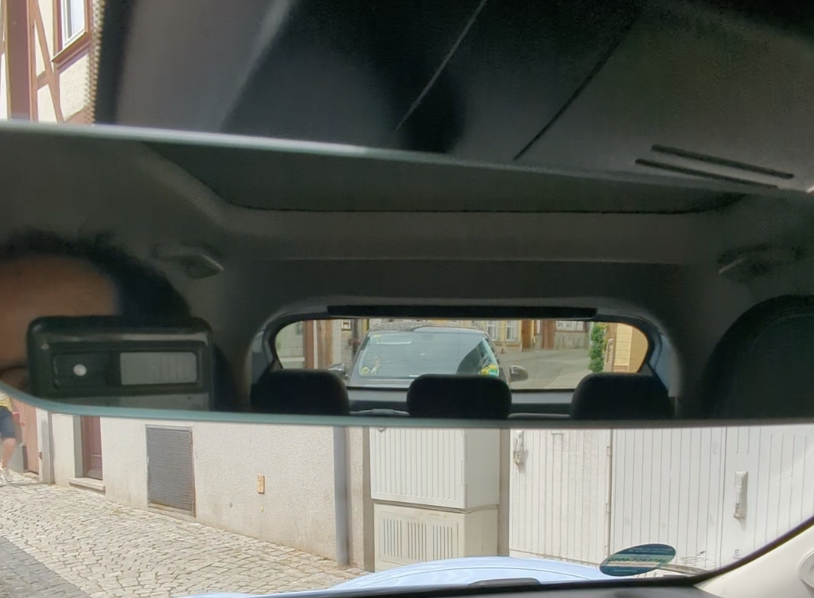
And rear storage space is limited, as well:
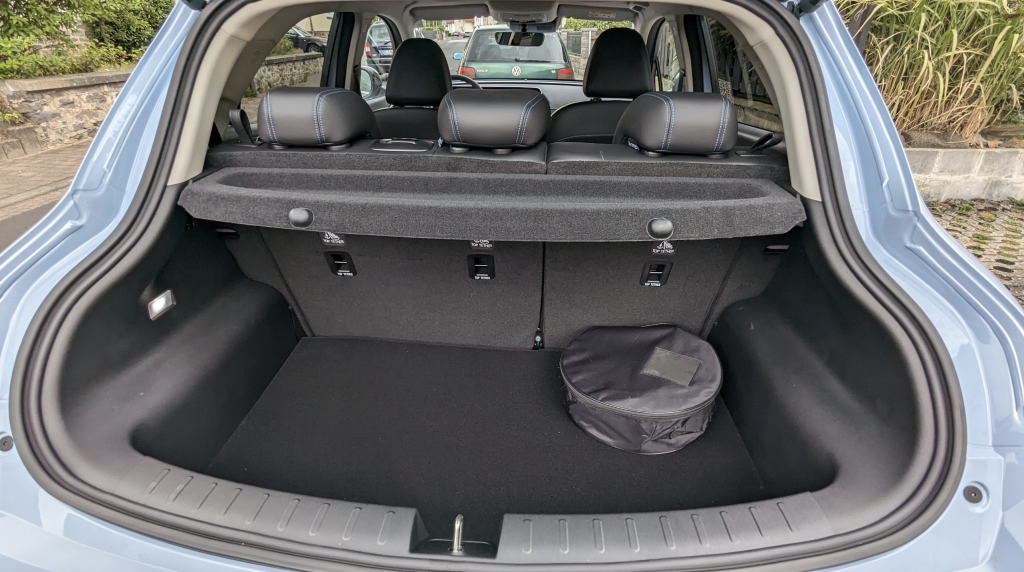
There’s also no frunk:
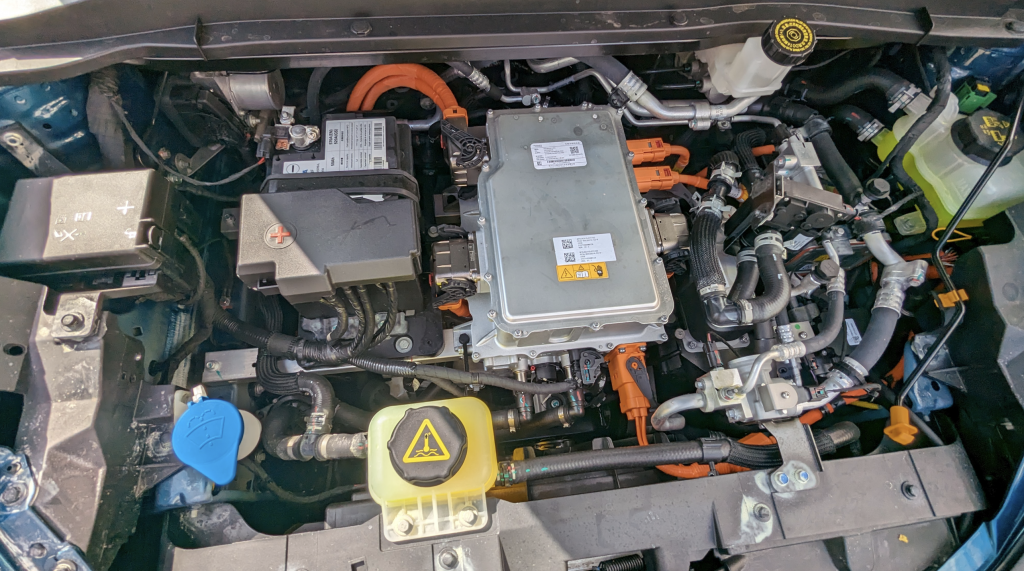
But the small trunk and lack of frunk means the occupant seating space is huge.
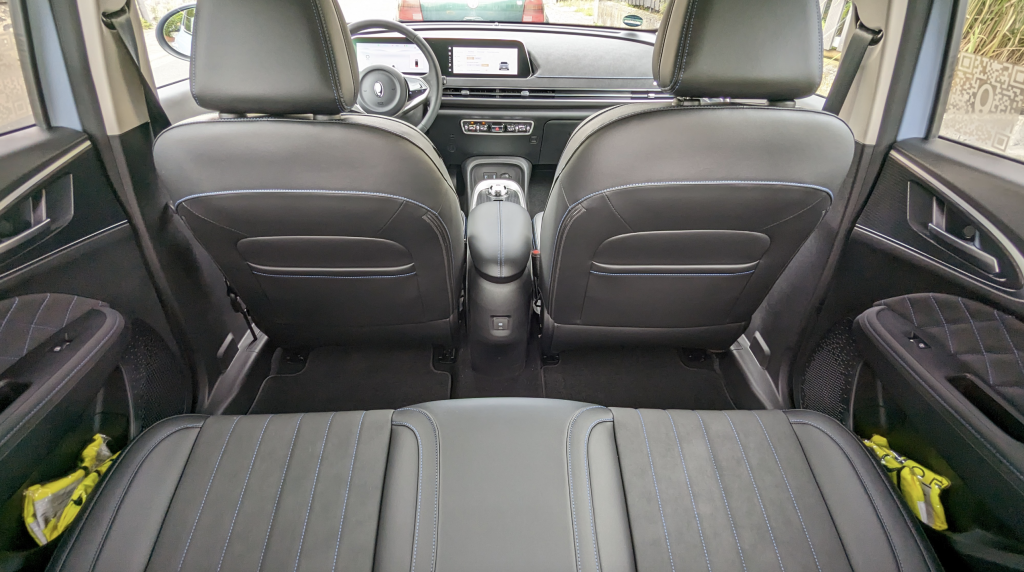
Between the nice, roomy, fun, and high-quality cabin cabin, the light steering, the legitimately quick acceleration, the decent ride quality on city streets (I didn’t drive it on the freeway), the Funky Cat is just cool. Here’s Tycho with a little background on the Funky Cat:
ORA Funky Cat
ORA is an EV-brand under Great Wall Motors, aimed at young folks, especially women. The brand was founded in 2018. ORA stands for ‘open, reliable and alternative’. The car names are rather alternative indeed, and include/included: Ballet Cat, Good Cat, Lightning Cat, Black Cat, White Cat, and Chery Cat. We are still waiting for the Punk Cat.
The ORA Funky Cat is a compact hatchback: 167 inches long. Single motor, FWD. 105 kW and 210 Nm (141 HP, 155 lb-ft), or 135 kW and 232 Nm (181 HP, 171 lb-ft). Top speed limited to 150 km/h, 0-50 in 3.8/3.5 seconds. LFP battery. 49.92 kWh for 501 km or 57.71 kWh for 501 km. Price in China starts at 107.800 yuan ($15K) for the most basic version.
It’s worth noting that the one I drove (see video above) I think had 169 horsepower and a 43 kWh battery, offering a range of 193 miles on Europe’s WLTP cycle. It felt quick and responsive, probably doing 0-60 somewhere in the 7s.
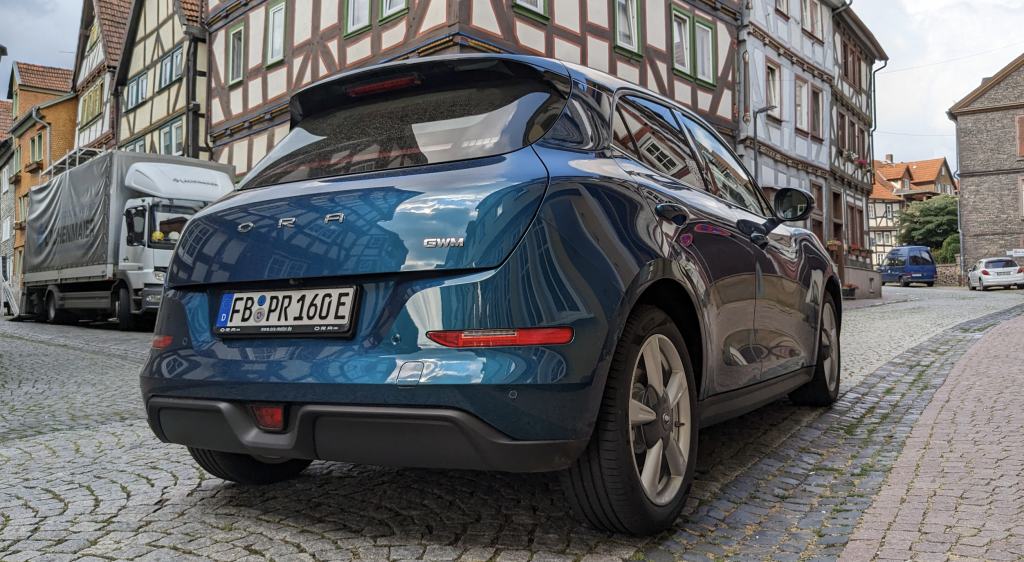
My only final note on the car is “AEB too intrusive,” and that’s something that it seems other journalists have complained about as well, with Car and Driver writing:
But the biggest distraction from the cabin’s calm was a multitude of beeps and alarms. The Funky Cat has a speed-monitoring system that pings every time the car goes above a posted speed limit, even by a single mph. The lane-keep assistant chimes if it feels the car is straying from its lane, eventually intervening further with aggressive self-steering. A driver-monitoring system adds yet further admonishment if it thinks the pilot’s attention is wandering. Deactivating these is an awkward, multi-stage process, and the lane-keep system frustratingly defaults to on with each restart.
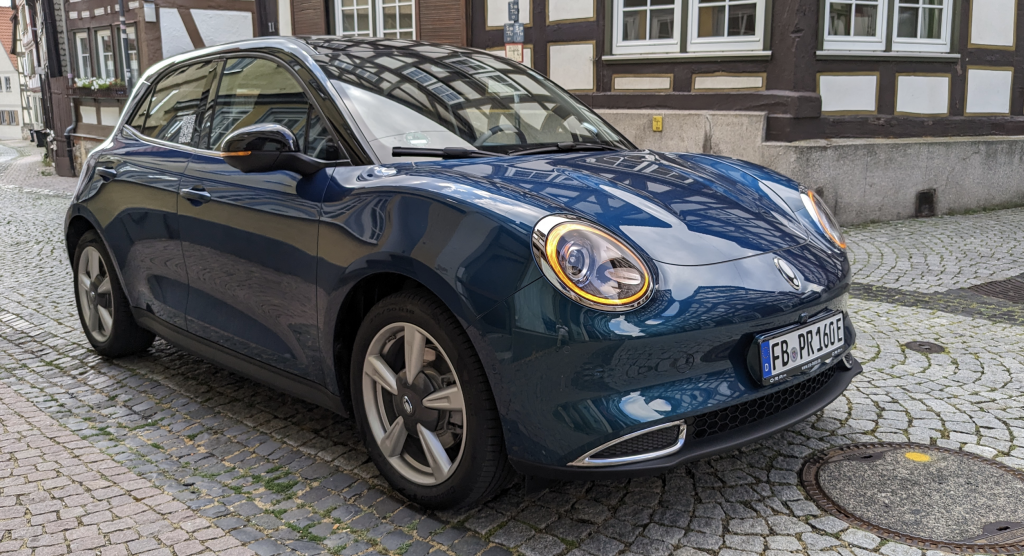
At about $36,000, the Ora Funky Cat ain’t cheap, but it’s competitive (A Tesla Model 3 starts at about $44,000 in Germany), and above all, it is — like the Aiways — just fun. Autocar gave the Funky Cat (renamed the Ora 03) a 3.5-star review, writing:
So when a new-to-Europe brand launches a new car like the 03, we must praise it for hitting a competitive mark in some, if not quite all, ways. It will draw in potential buyers with likeably cheerful styling and a plush interior. For its size, it’s quite keenly priced, so if someone was considering a Fiat 500 or Mini Electric as a predominantly urban EV, the 03 could be a viable alternative that offers a bit more space.
Compared like for like with cars such as the Vauxhall Corsa Electric, however, it lags on range, charging, long-distance comfort, ease of use, multimedia and assisted driving (no matter what NCAP says). What’s more, a lot of the finer details, like missing features and system glitches, suggest this car isn’t finished and needs another cycle of development.
The MG MG4: A World-Beater In Value
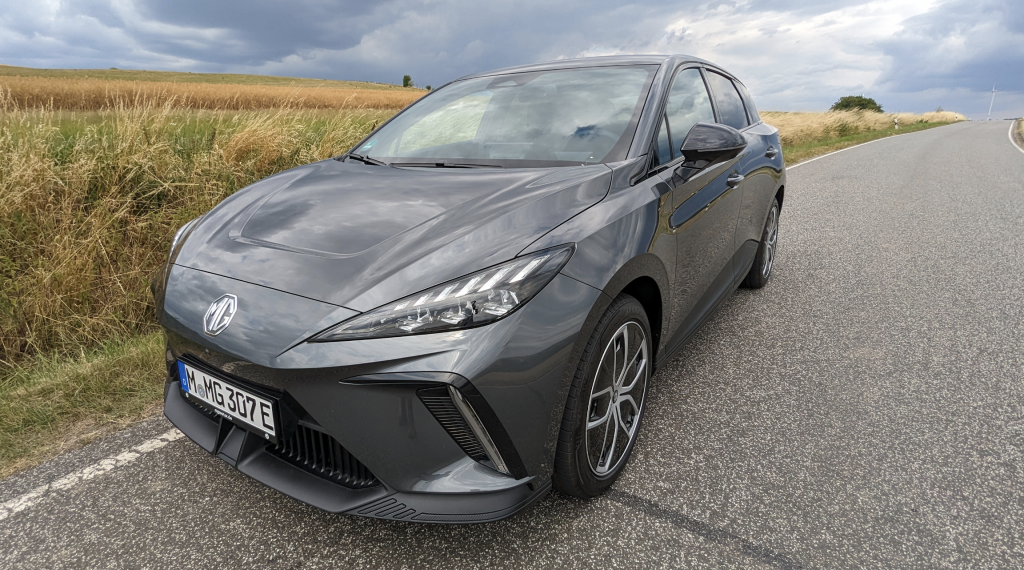
The MG4 is different than the other Chinese cars I drove because it’s not apologetic about the fact that it’s trying to offer the most “value” (i.e. it wants to be cheaper than the competition). Here’s what Inside EVs had to say when MG announced the car:
Following the UK launch earlier this month, MG has announced pricing and the range structure of the MG4 Electric compact hatchback in mainland Europe markets.
Available in Standard, Comfort and Luxury trim levels, the MG4 Electric has an entry-level price of €28,420 ($28,530) in Germany and €28,990 ($29,085) in France; besides Europe’s three biggest car markets, the MG4 will be available in Italy, Spain, Norway, Sweden, Denmark, the Netherlands, Belgium and Luxemburg.
The prices correspond to the Standard model featuring a battery capacity of 51 kWh, up to 350 kilometers (217 miles) of range in the WLTP cycle and a rear electric motor delivering 125 kW (168 horsepower). Offering AC public charging at 6.6 kW and DC fast-charging at up to 117 kW, the MG4 Electric Standard can be fast-charged from 10 to 80 percent in 40 minutes.
Under $30 grand! It’s this pricing, along with a general competency that has made the MG4 the second best-selling EV in the U.K., trailing only the Tesla Model Y. I kept this in mind when reviewing the MG4, because it’s not quite as whiz-bang as the others. The interior, for example, is quite basic:
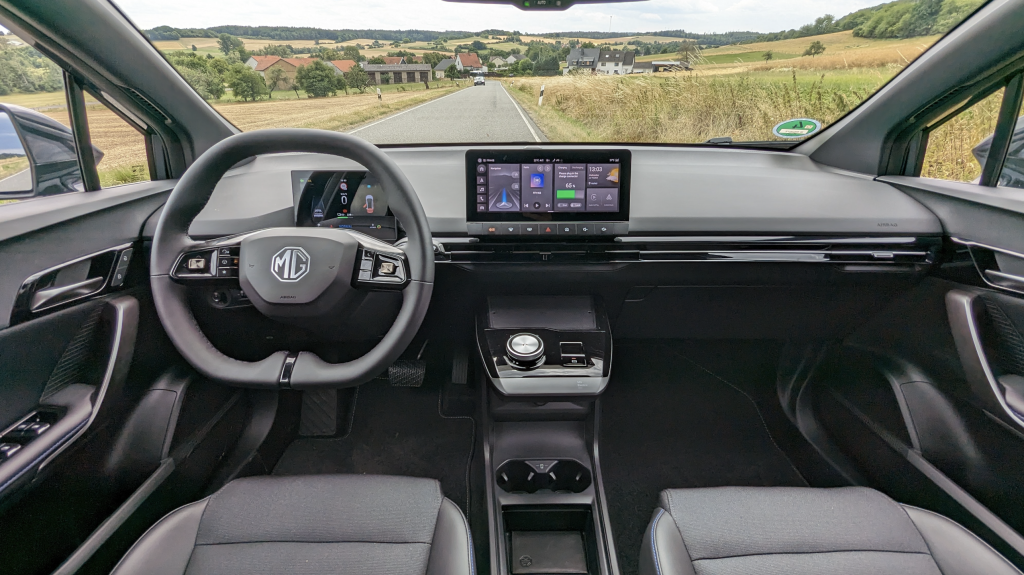
There’s a rotary dial up and out of the way, which I quite like.
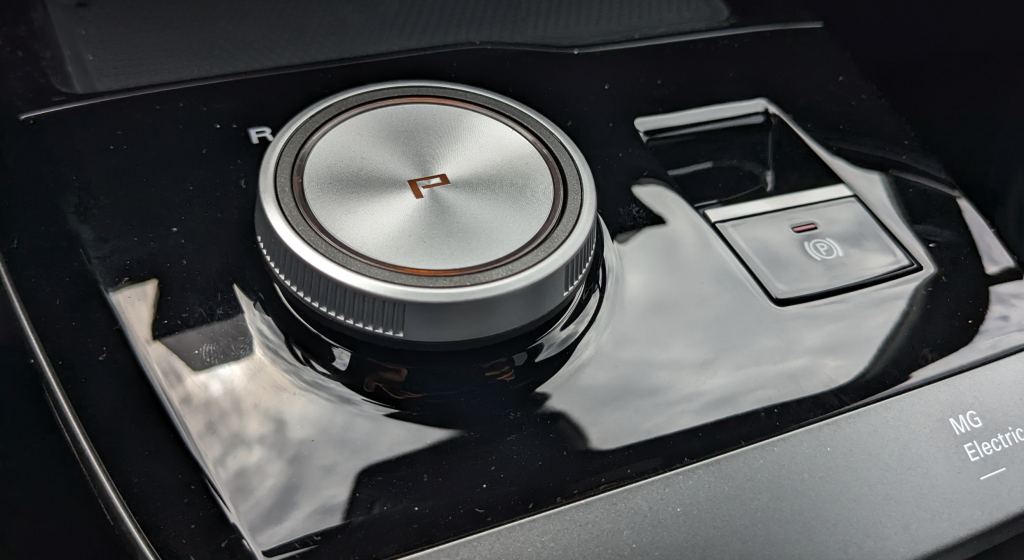
The interior was a bit smelly, and the material quality was only “fine.”
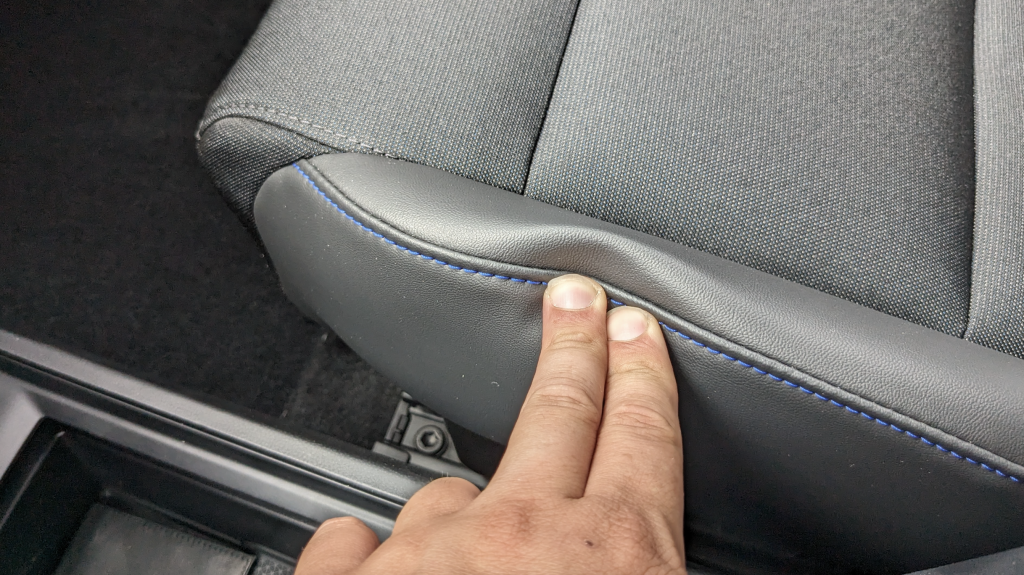
There’s a center screen atop the center of the dash, and most functions are input via touch. There are a couple of physical switches at the base of that screen, but I’d definitely like more even if I know they add cost. But overall, I enjoyed driving the MG4, which is actually rear-motor, rear-wheel drive:
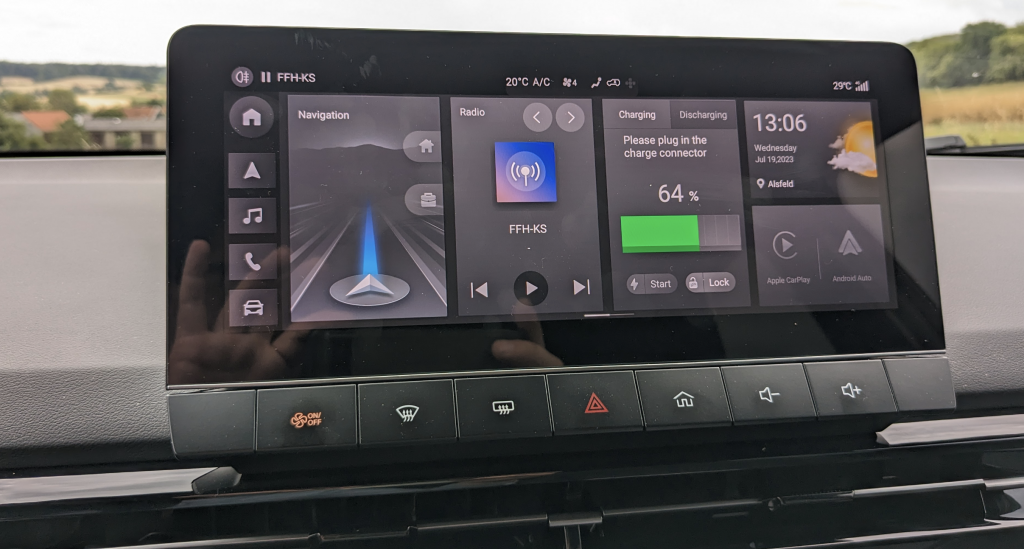
The backup camera, too, isn’t going to win any awards:
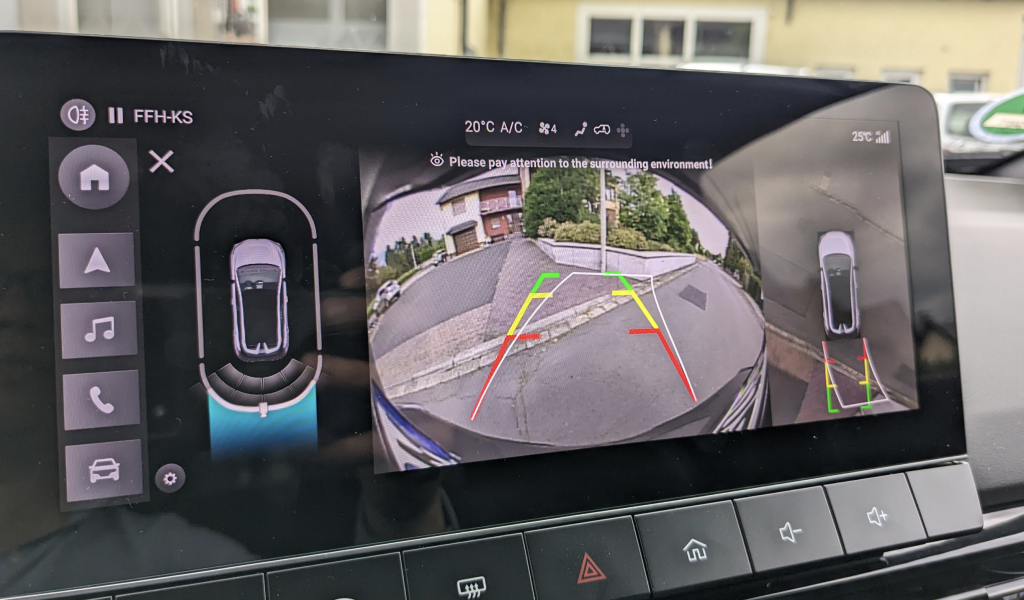
Nor is the rear visibility (though it’s not the worst I’ve seen):
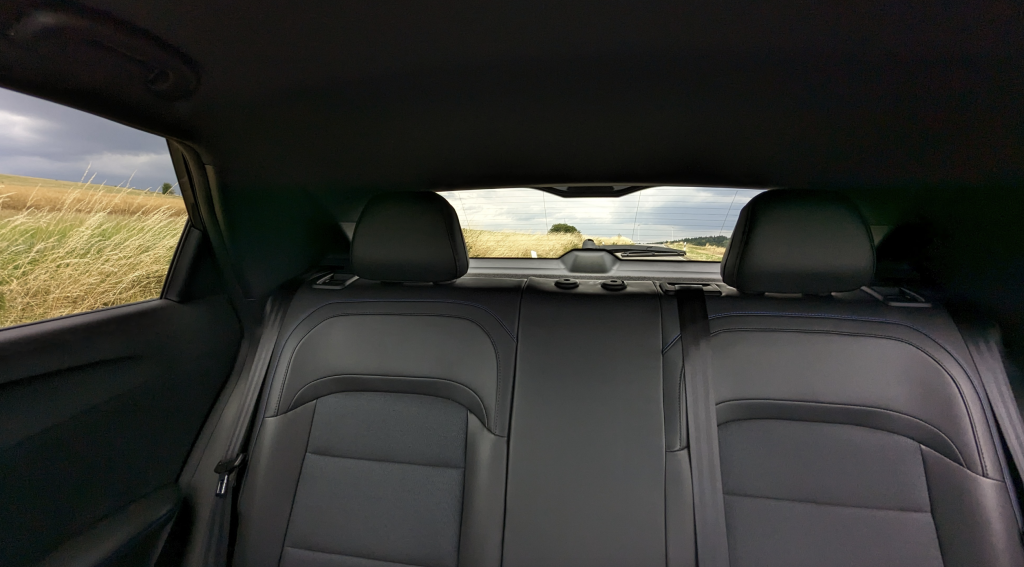
Another gripe I have: No frunk:
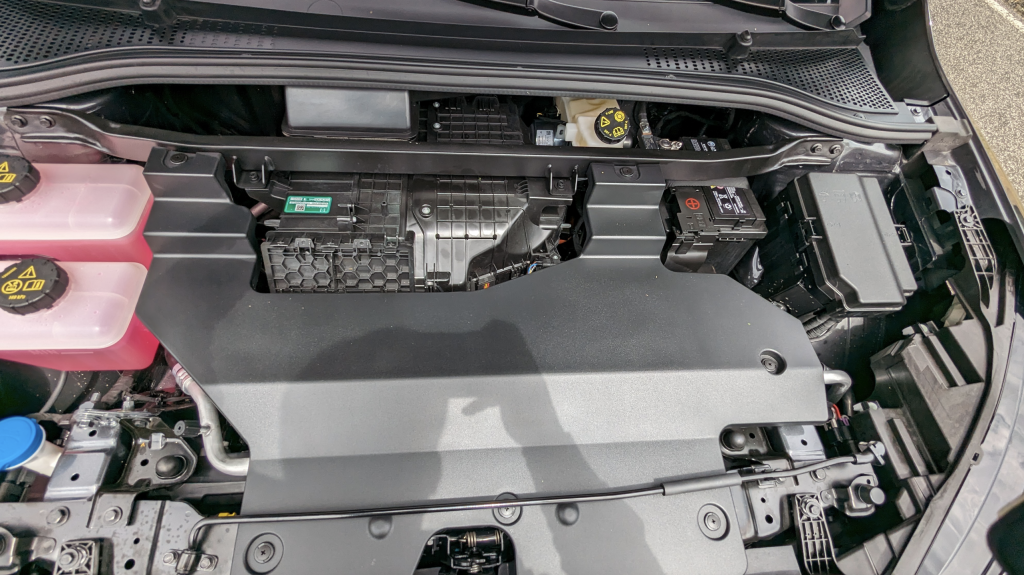
The car I drove wasn’t the base model, but instead a 200 horsepower, 64kWh one costing around $35k and offering about 200-ish miles of WLTP range.

I found it to be rather quick, with an estimated 0-60mph time of around 7.5 if I had to guess. The car is spacious on the inside, and really stands apart from some of its Chinese competitors in the twisties, where it handles quite well.
“It is good enough, cheap enough, not bad,” is my conclusion in the video above, with the main point being that MG cut costs in all the right places, ultimately offering a compelling EV that doesn’t feel cheap despite a few compromises. Autocar really likes the MG4, giving it 4 stars and concluding:
The MG 4 EV may not move any technological boundaries, but other manufacturers should undoubtedly see this car as a serious threat, because it does so many things so well, and for such a keen price that it is hard to argue you should buy any other electric hatchback.
[…]It makes excellent use of its footprint to offer generous interior space and mostly comfortable accommodation. Range, efficiency and charge speeds are all competitive if not groundbreaking.
As long as you’re not after a premium-feeling product, most of the criticism one can level at the MG 4 is a collection of niggles rather than any substantial failings. The biggest issue is that the adaptive cruise control is very poor. There are also some quality issues in the interior that go beyond those excusable by the low price, though the handful of usability quirks and refinement lapses fade into the background after a few days. The MG 4 is simply a well-rounded electric hatchback at a price that appears impossible to beat.
And should you be curious to learn more about MG and the MG4, here’s a bit of info, per Tycho:
MG is another formerly British brand under SAIC. When MG-Rover went bankrupt in 2009, Nanjing Auto acquired the MG brand and SAIC the IP and assets of the Rover brand, but not the Rover name. SAIC then founded the Roewe brand. So at that time, there were two Chinese companies each holding half of MG Rover. That was not desired so the government arranged a takeover of Nanjing Auto by SAIC, and MG and Rover/Roewe came under one roof once more.
The MG4 EV is a sporty electric hatchback launched in China in 2022, and it is exported to many European countries, including the UK, Germany, and the Netherlands. Size: 169 inches lnog. Power: FWD: 125 kW and 250 Nm or 150 kW and 250 Nm (168 hp, 184 lb-ft; 201 hp, 184 lb-ft). AWD dual motor: 315 kW and 600 Nm. David drove a FWD model. Top speed is limited to 160 km/h (100 mph). Battery: LFP 49 kWh for 425 km or ternary lithium 64 kWh for 520 km or 460 km (the AWD model). Price in China starts at 179.800 yuan ($25K).
Maxus MIFA 9: A Swagger Van
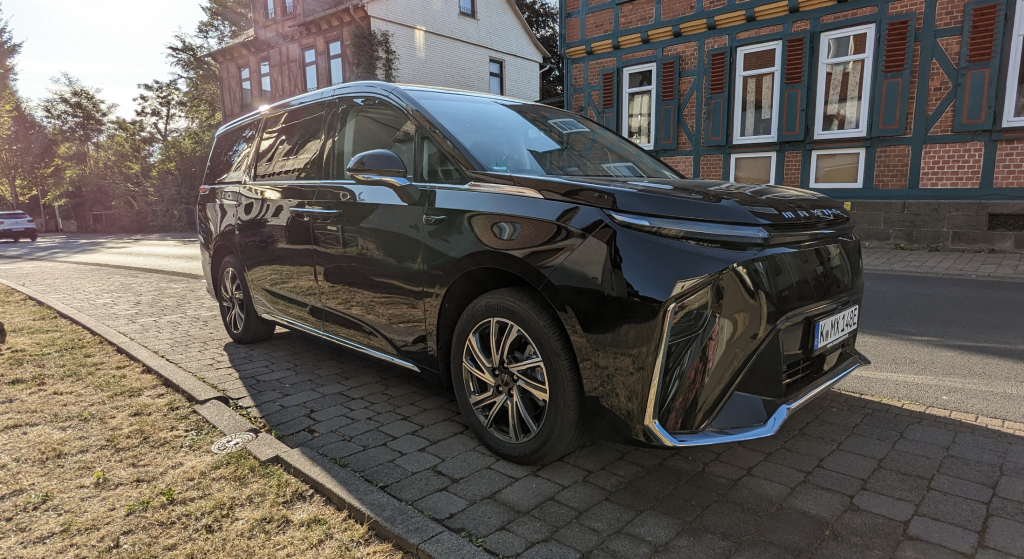
Right away, I’m going to tell you that the best EV at the German Car of the Year was the Maxus MIFA 9, and it gives you an idea of what a Chinese automaker can do with lots of money to spend, because the MIFA 9 isn’t cheap, with a price tag between about $60,000 and $70,000. But it feels it.
Before I get into that, I’ll let Tycho tell you a bit about Maxus and the MIFA 9:
Maxus is a brand under SAIC. The name originates from the LDV Maxus, a model of the dead British commercial-vehicle maker LDV Group. In 2010, SAIC acquired the company’s IP, including the Maxus name, which SAIC then morphed into the brand name. Initially, Maxus made commercial vehicles, both ICE and NEV. Nowadays, Maxus makes passenger cars as well: MPVs of various sizes, pickup trucks, and SUVs.
The Mifa 9 is a full-size electric MPV, launched in 2021 and updated in late 2023. Size: 207.5 inches long. It is a 3-row 7-seat vehicle. Power: single motor, FWD. 180 kW and 350 Nm. Top speed is limited to 180 km/h.Ternary lithium battery: 77 kWh for 480 km or 90 kWh for 560 km. Price in China starts at 253.900 yuan ($35.3K).
The MIFA 9 is a big van, and while I don’t love that it’s front-wheel drive (I prefer the handling of a rear-wheel drive EV), just about everything else about it is beautifully done. I have very little criticism to offer.
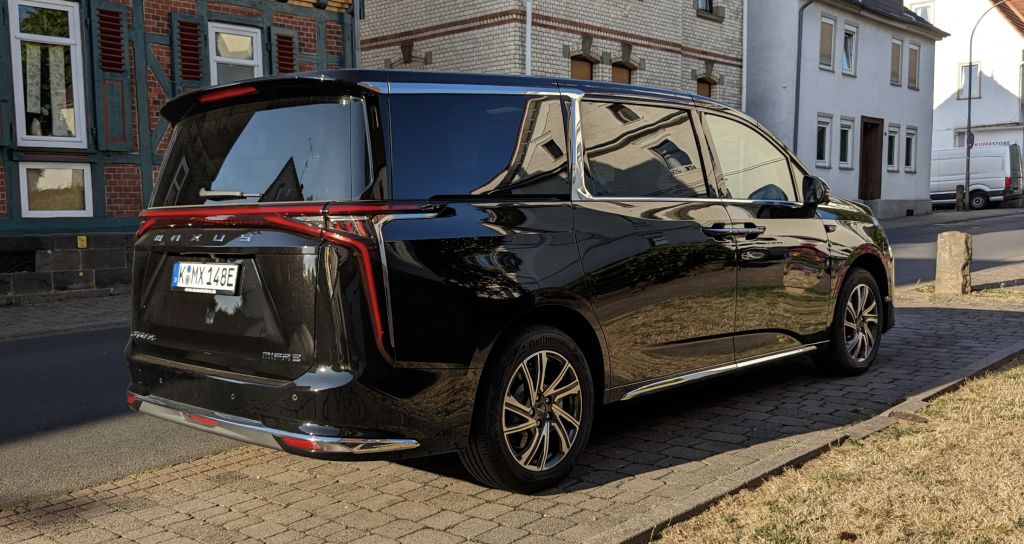
For one, I think the styling on the outside is nice. The lighting is aggressive, the shape is a bit boxy in the rear, but that offers practical benefits, and the chrome trim isn’t over-the-top (I like the Z-shape the chrome creates in the side profile). The rear wiper looks hilariously tiny, but otherwise, I think the styling on the outside is decent.
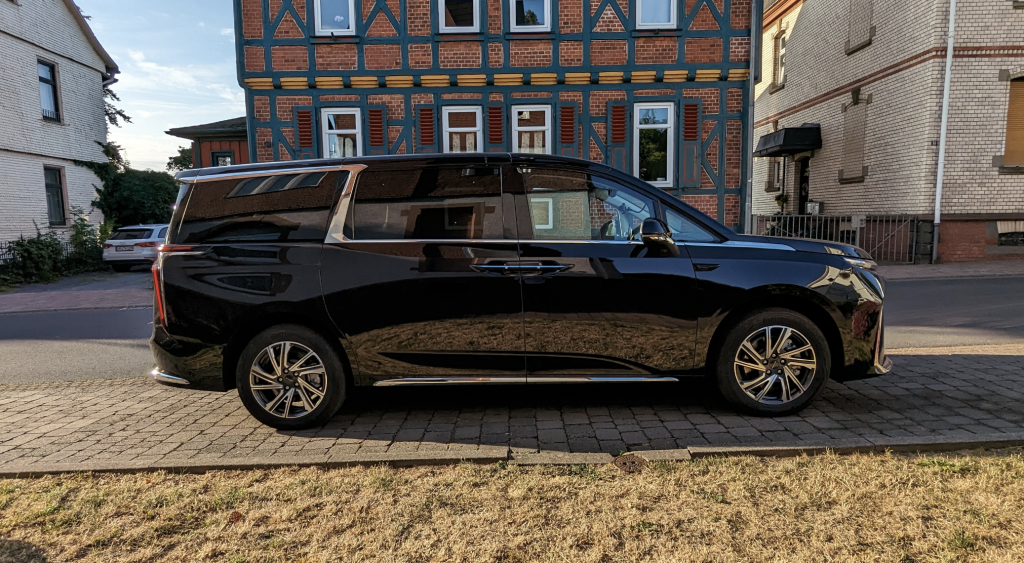
It’s really on the inside where the MIFA 9 stands out. The material qualities are excellent, the seats have an almost “woven” look to them, and the simple two-screen layout just works.
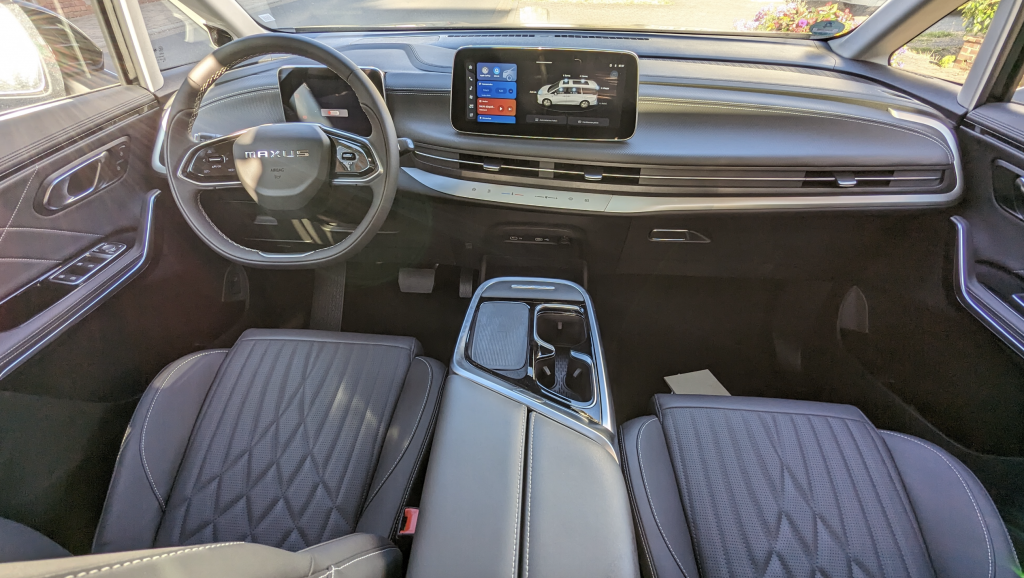
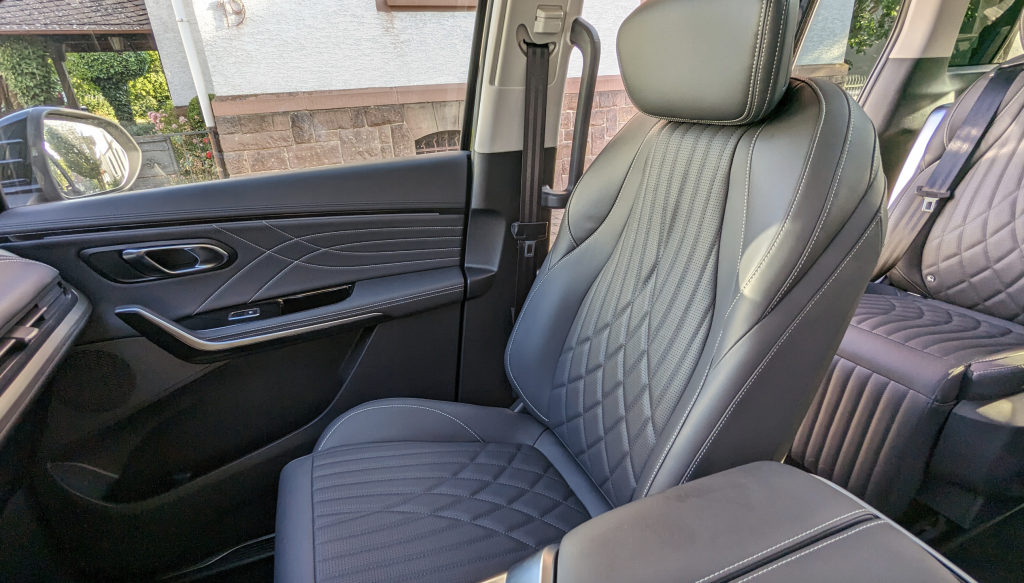
But most important is that column shifter, which frees up the center console to be used for wireless charging, holding cups, or whatever:
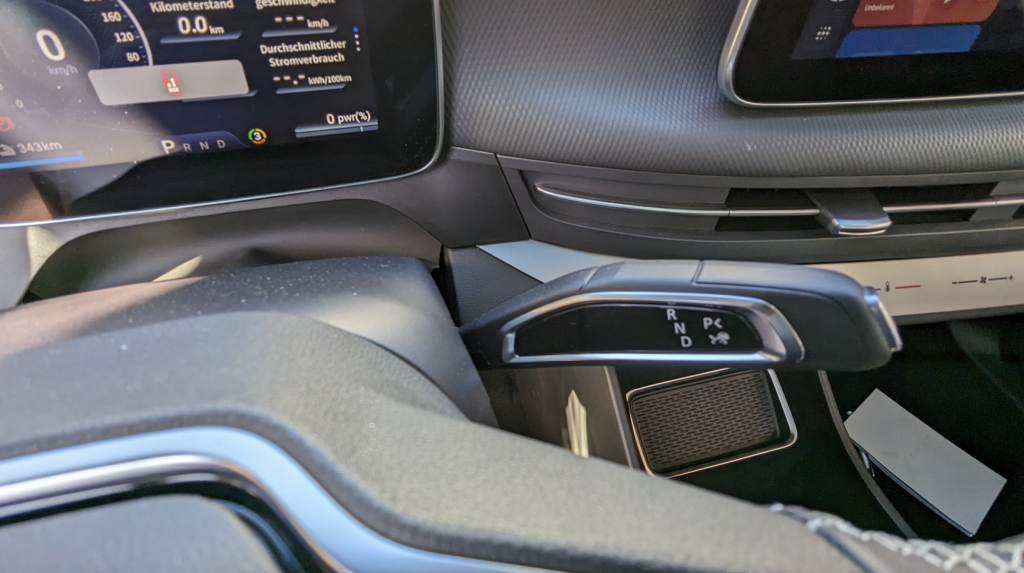
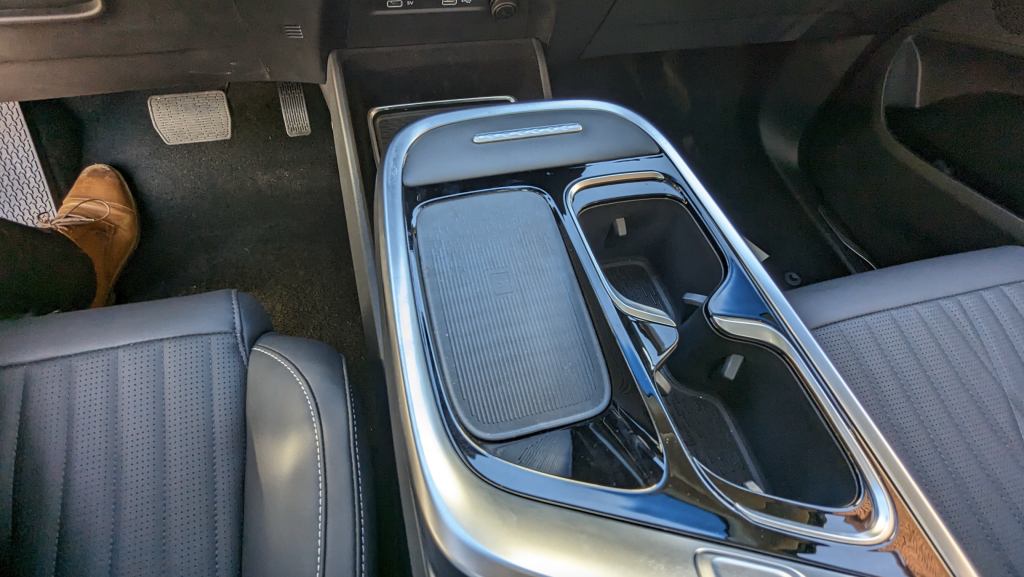
Down below Maxus did something I wish BMW did with my i3: The put in a partition on the flat floor so you can put things between the front footwells without those things rolling around. Look at all this storage down below:
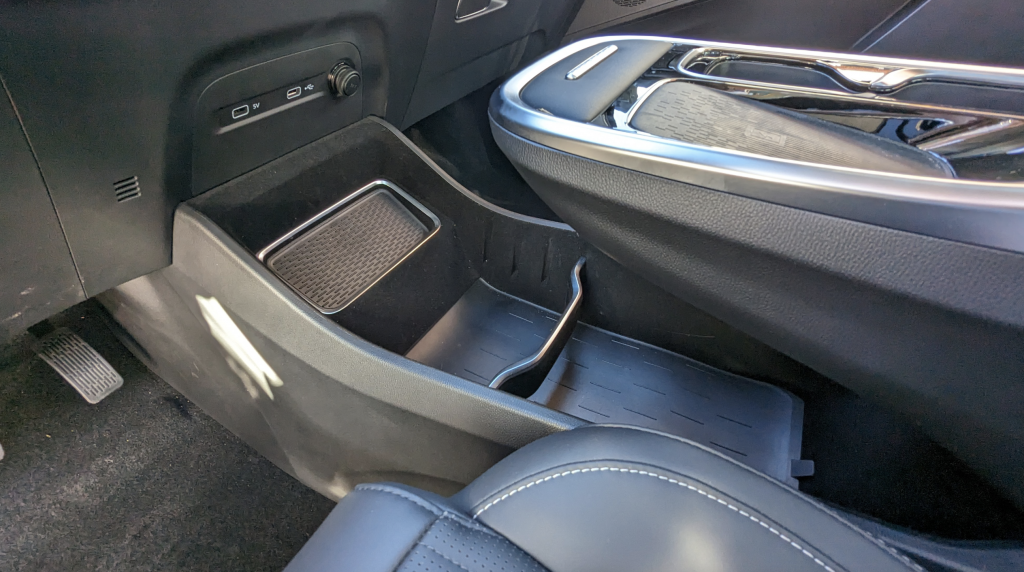
The legroom in the rear — in both the third and second rows — is simply prodigious:
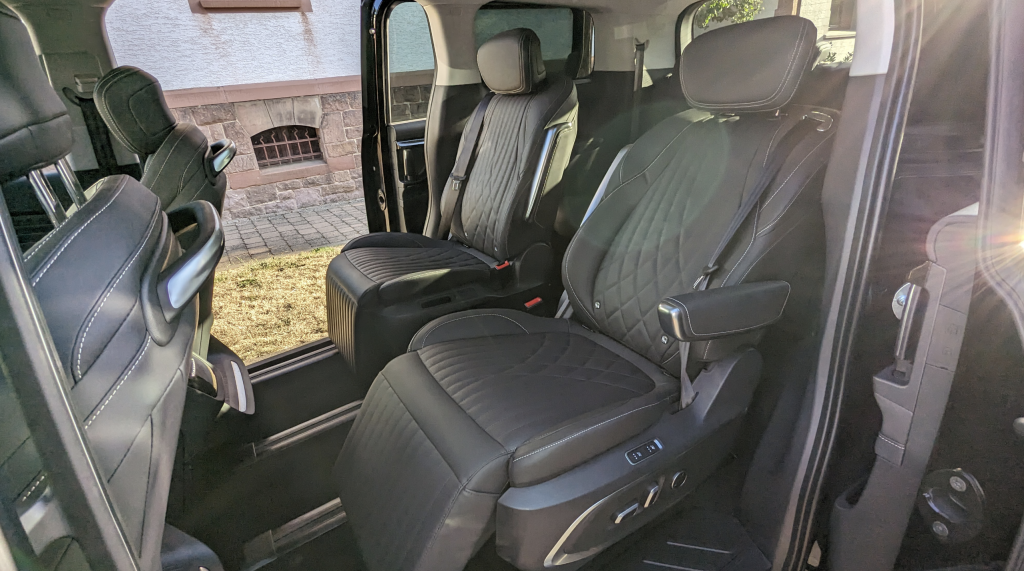
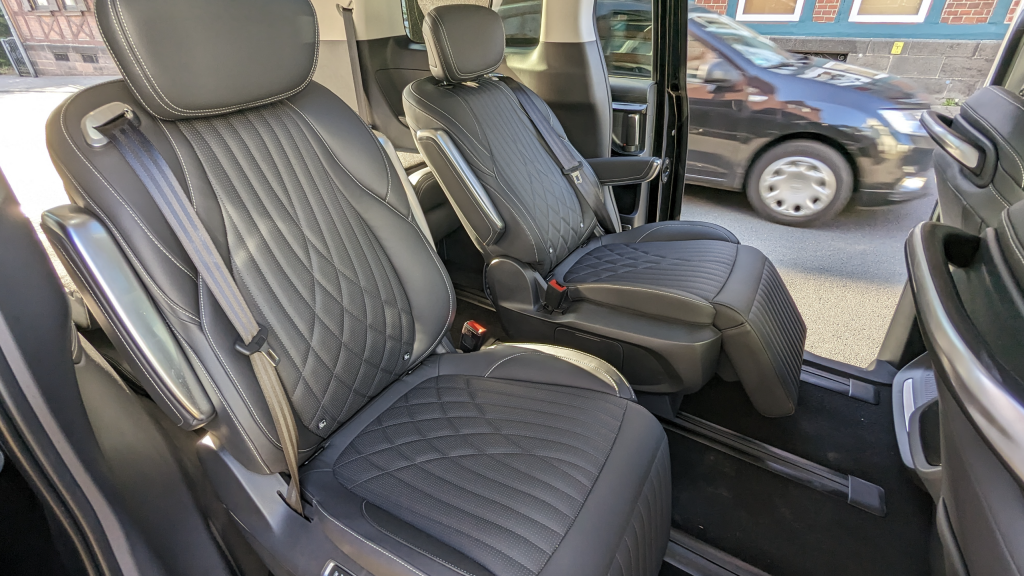
There’s not a load of cargo space in the very back due to the ridiculous legroom, though it’s worth noting that there is a small frunk:
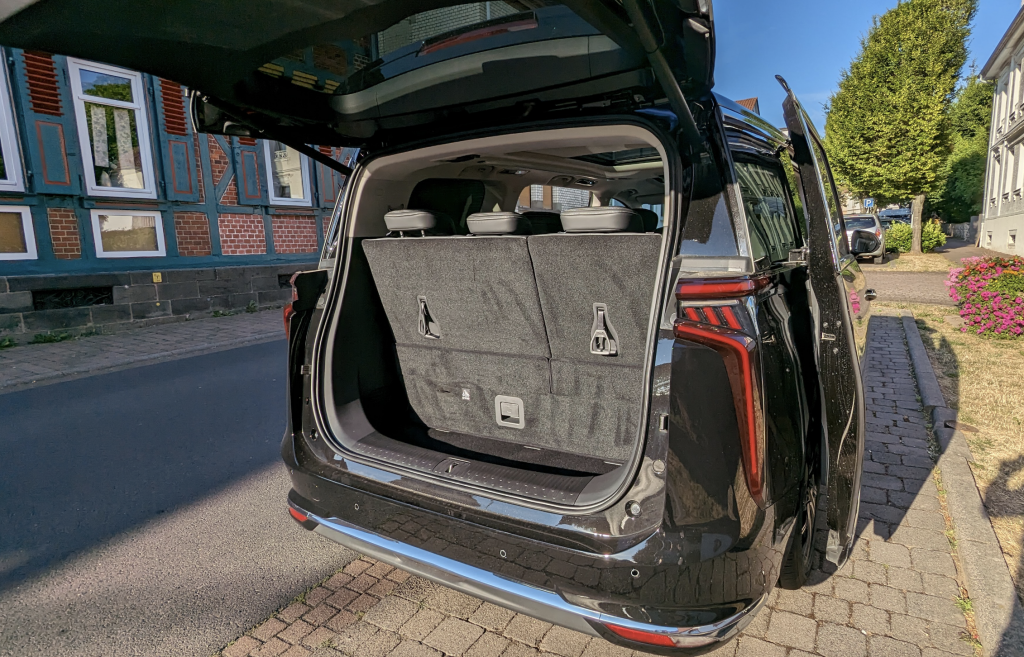
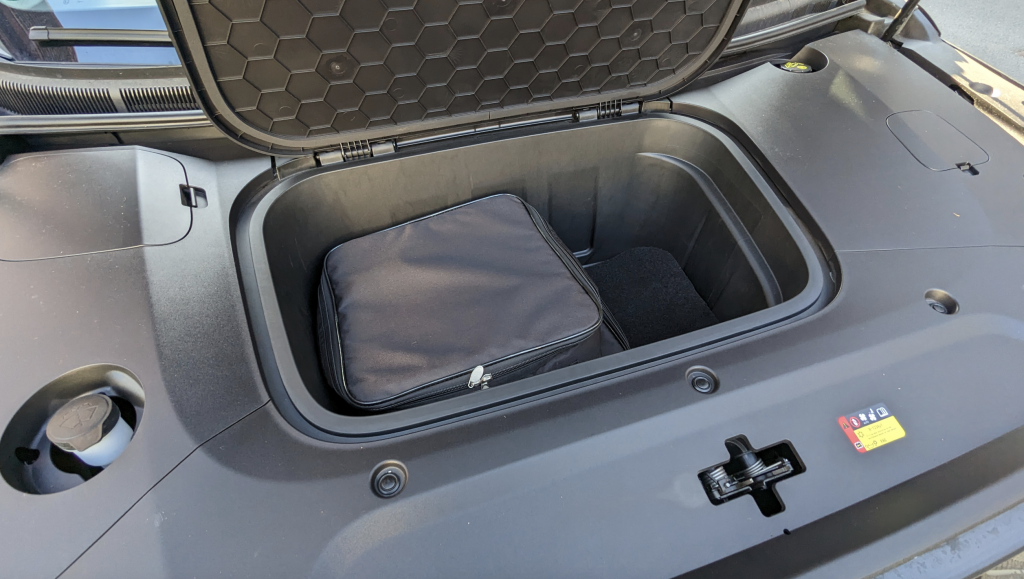
Visibility all around is quite good; I especially like those little triangle windows that split the A-pillars:
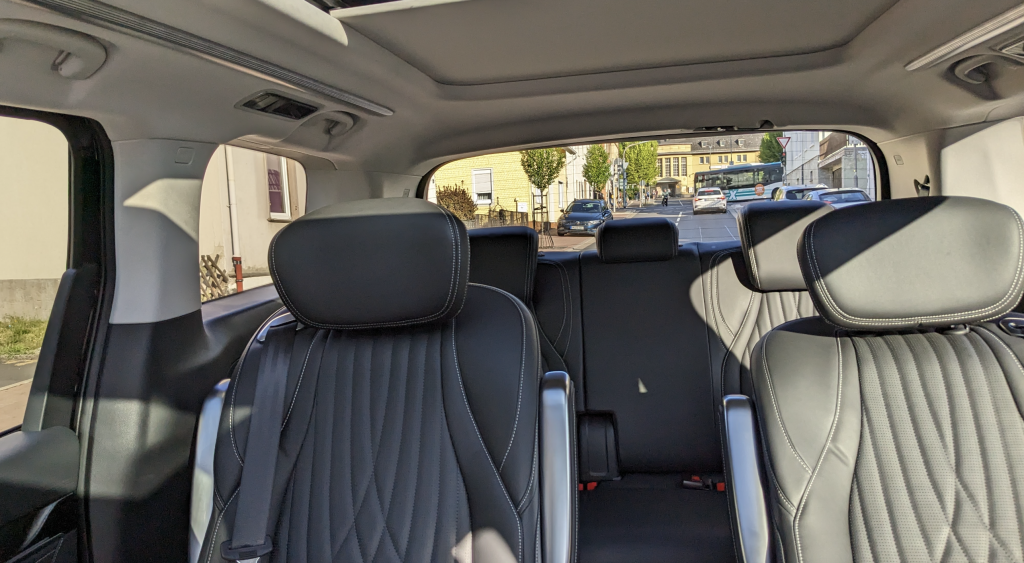

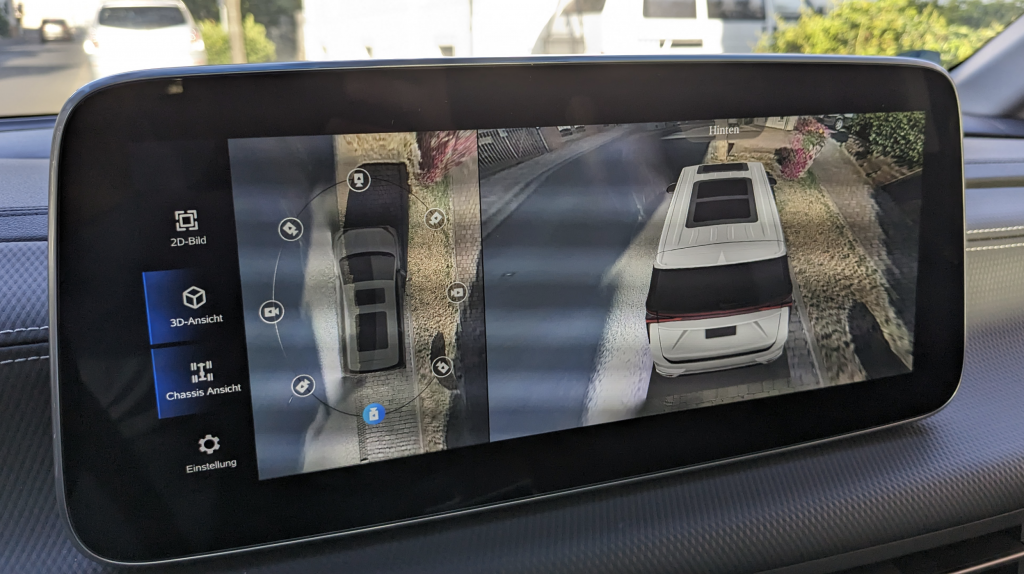
My one grip is that the MIFA 9 doesn’t have much in the way of physical buttons. It has these touch-sensitive HVAC and blower switches:
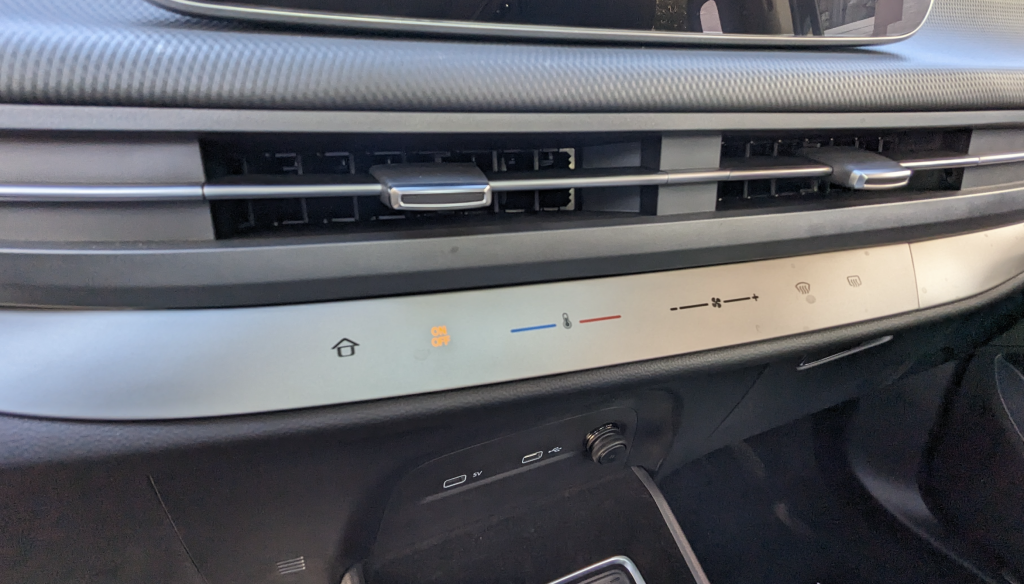
And then the rest is all either on the steering wheel or on one of the screens:
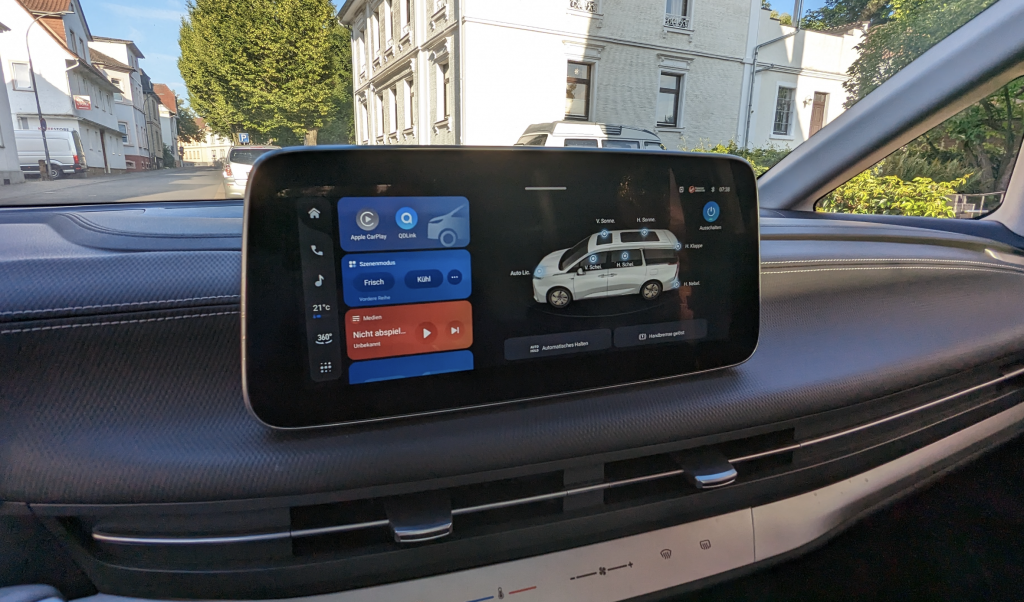
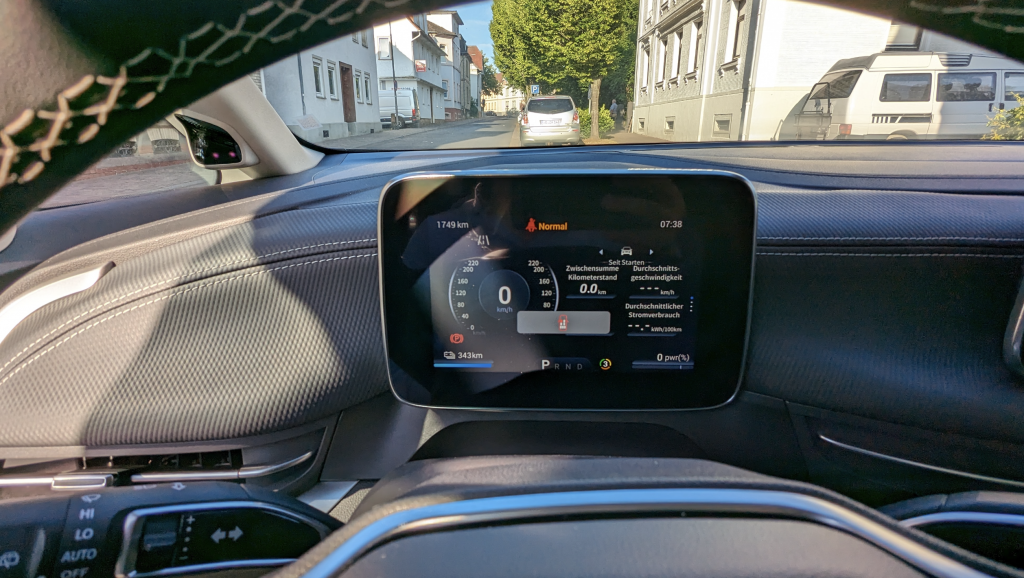
I’d like to just point out the huge sunroofs:
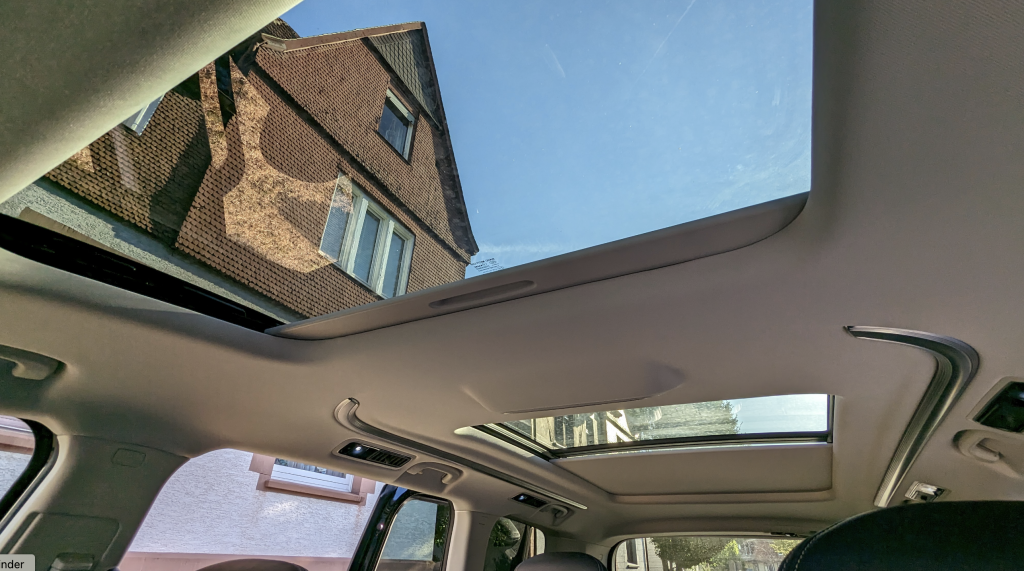
The heated and cooled seats, whose switches were not in a great spot:
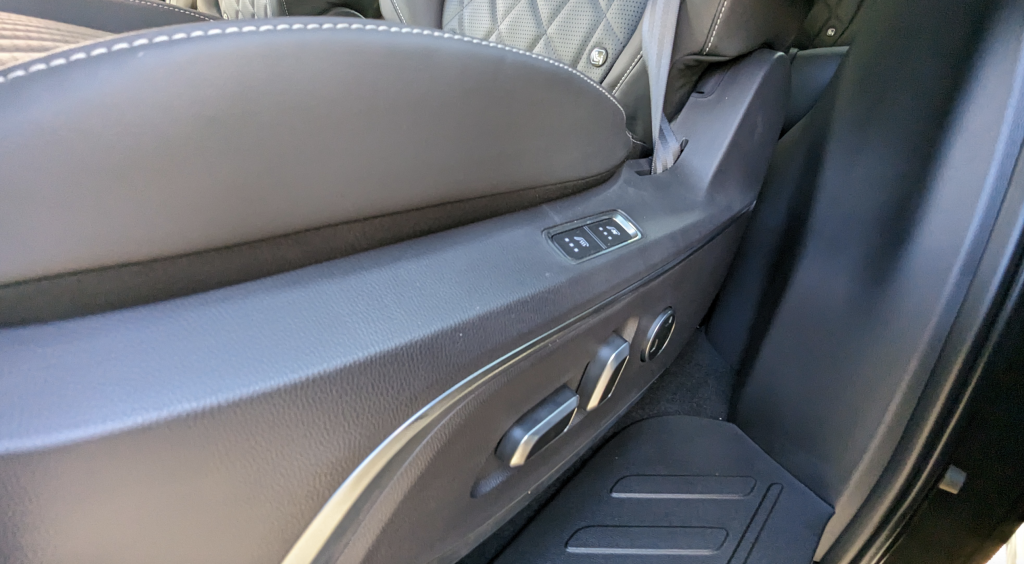
And then this fun hidden cubby on the left side of the steering column, on the dash:
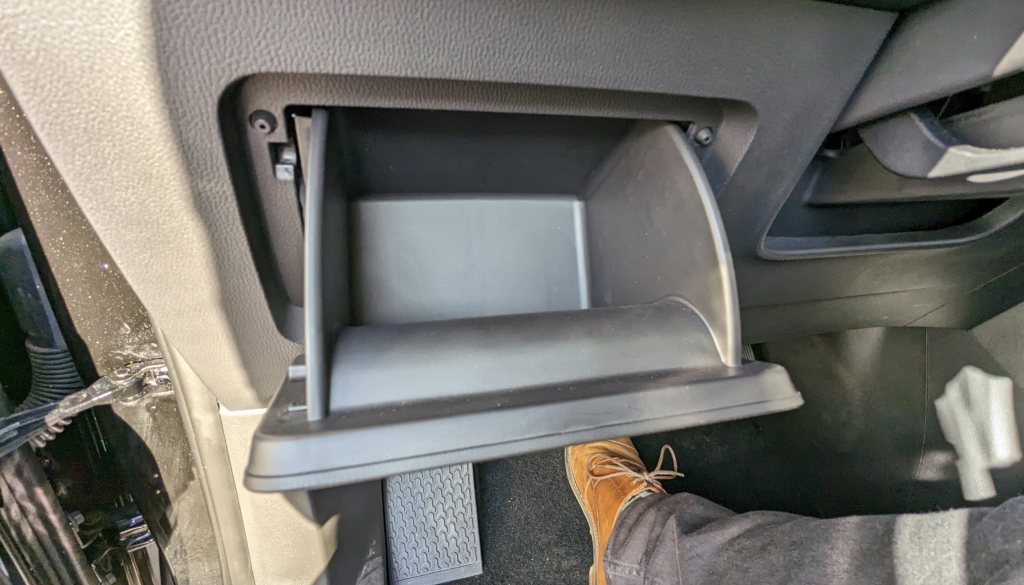
And the camera tech — wow is it excellent:
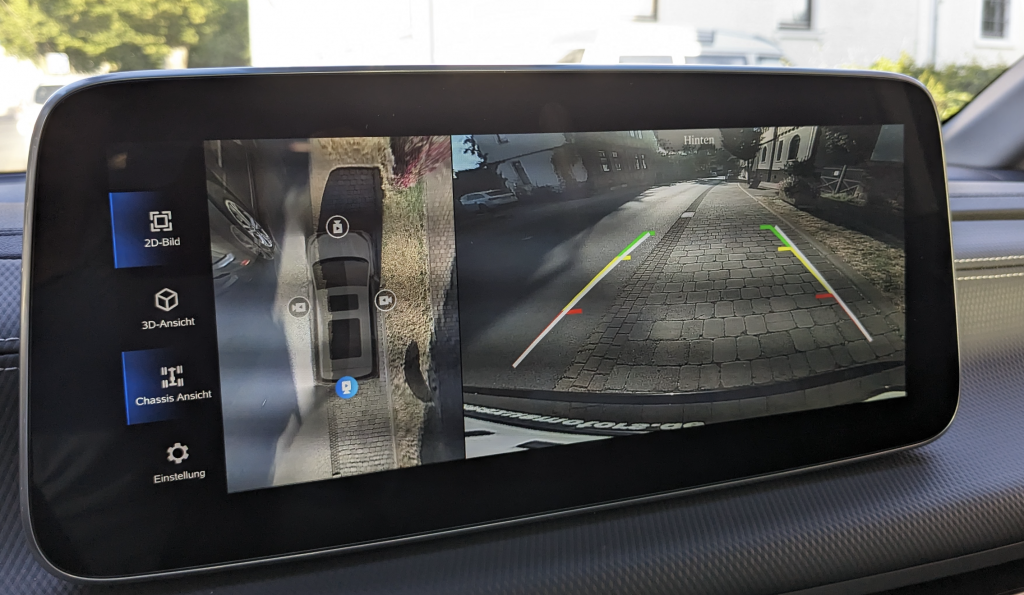

With a 90 kWh battery, the van promises 250 to 300 miles of range on the WLTP cycle, and with 250 horsepower, it’s got more than enough power even if it’s not exactly quick. It’s not about speed or even handing, it’s about swagger, and the Maxus MIFA 9 has that in spades. Car and Driver agrees, writing:
While it is likely that most German shoppers will prefer to buy their EV minivans from familiar brands, the MIFA 9 illustrates that the Chinese industry can produce something that, while not a traditional luxury car, is a genuinely luxurious vehicle.
I Spoke With Some Reps From A Few Chinese Automakers. Here’s What They Said
So you may have noticed that the Chinese cars that I mentioned above are not perfect, with me pointing out plenty of gripes. My point here isn’t that Chinese EVs are perfect, it’s that they are simply no longer behind western automakers, offering some truly unique designs and features. It’s worth noting that the issues that I mentioned here are not unlike some of the problems American or German EV automakers are struggling with even today. As an example, I drove a VW ID.3. Not only did it feel relatively boring compared to, say, the ORA Funky Cat (with which it shares a 3.5 star Autocar rating), but it had similar brake-feel issues that I felt in the Aiways:
I had a chance to talk with a few representatives from Chinese automakers while in Germany for the German Car of the Year testing, and I learned quite a bit.
“European automakers aren’t so much the competition, because they’re so far behind,” an Aiways rep told me, saying the levels of approval a German company has to deal with are massive. “[Their cogs] turn so slowly,” the representative told me. “They’re dinosaurs.” The representative did tell me that the European automakers, though a bit late, have really stepped it up.
The representative said Aiways focuses on building cars that are not too complicated, and affordable. “Money is a big thing,” they said. Their main competition is other Chinese automakers.
The rep acknowledged that Aiways has learned from legacy automakers, mentioning Alexander Klose, Aiways’ Executive VP of Overseas Operations, who spent quite a while working for Volvo, JLR, and Ford:
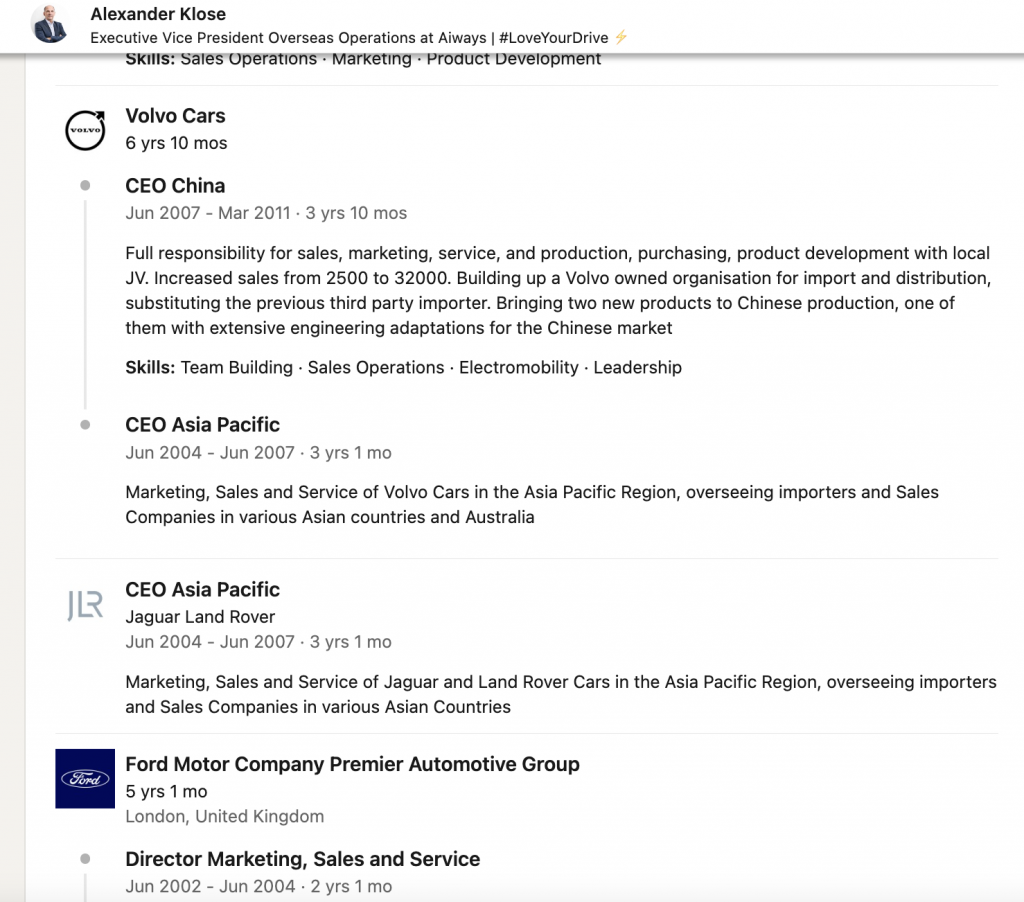
We also talked about the challenges Chinese automakers face in Europe, just by virtue of being new and contending with China’s mixed reputation for quality. The Aiways rep said it’s all about getting people comfortable driving the cars. “People say…that looks interesting,” and then they try it, and tell their friends. “It’s a general [China] thing and not the brand,” the rep said. “Listening to people will also get their attention. ‘Look they’re listening to us,’ [they will think].” The representative noted the new U6 and its glovebox, which the U5 did not have.
I spoke with an MG rep, and they also talked about the importance of listening to customers, and about how Chinese automakers are able to adapt in ways that perhaps western automakers traditionally can’t, noting that MG added a rear wiper in just nine months after hearing feedback asking for it. “They want to make decisions quickly,” the rep said, noting that speed is important in China. The rep also mentioned how Hyundai and Kia’s started as brands that people were suspicious of, but now they have great reputations; Chinese automakers could follow the same path.
MG’s PR rep said the U.S. is still far away, but that MG is in Sweden, Norway, the Netherlands, and other big pro-EV countries (lately MG has entered Australia, as well, and it’s doing quite well there). They went on to say that Germany is in some ways the competition, as that’s “the country where the car was born,” but noted that “For Chinese, the level of respect for Germany is high… they didn’t want to go there and lose their face.” The MG4 came in out of the gate quite strong, the rep noted, using many of the same suppliers as western automakers — Bosch, ZF, and Continental, for example.
As for how MG was influenced by western automakers, the rep told me: “[SAIC was] going along way back with VW, so the structure is also like VW.” They talked about the joint venture system: “Why should you offer a huge market to just anyone knocking on the door?” The point was to create jobs locally in China, hence the joint-venture system, which involved building cars locally, and locals becoming experts who eventually asked: “Why not build cars ourselves?”
And thus, here we are: With China more competitive in the automotive space than ever, going up against the very Western automakers whom they’d learned so much from. What a ride.
